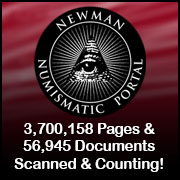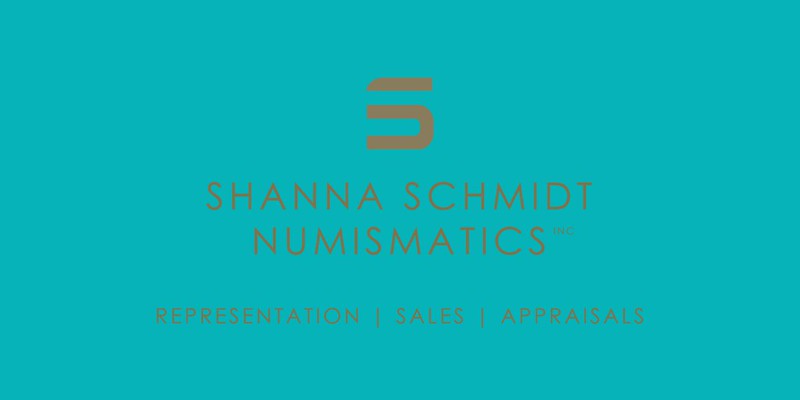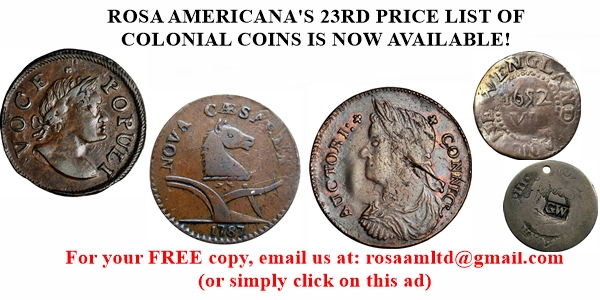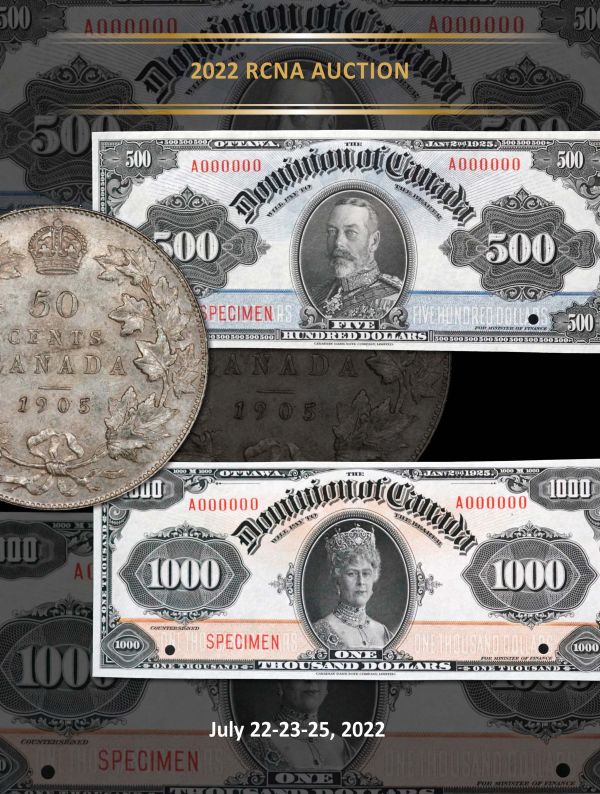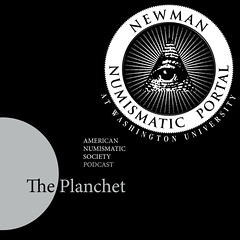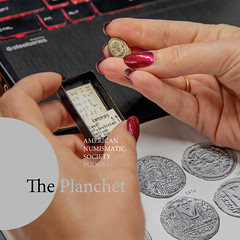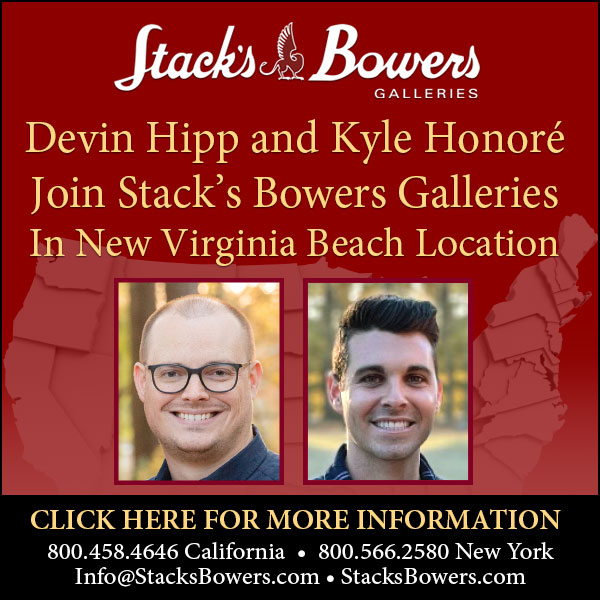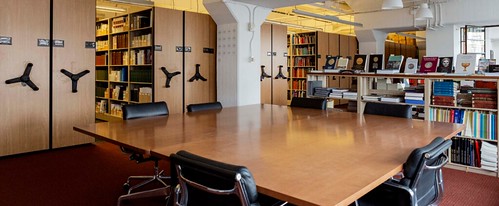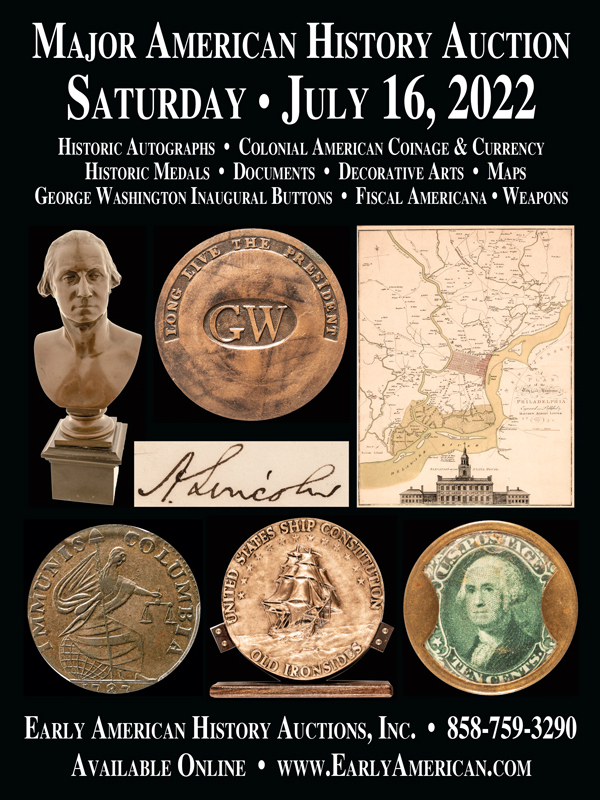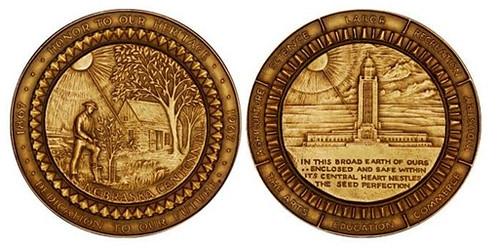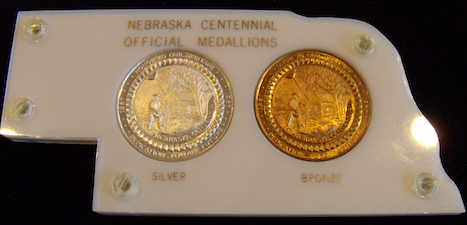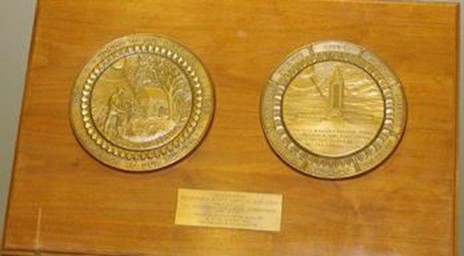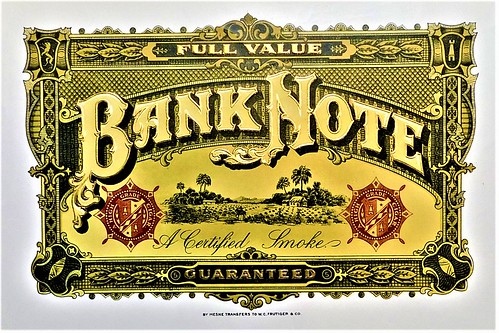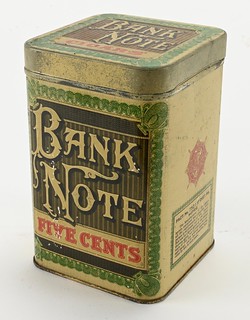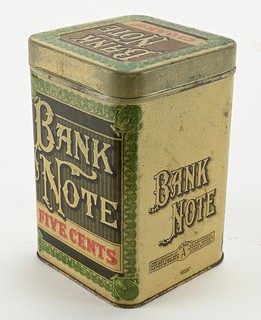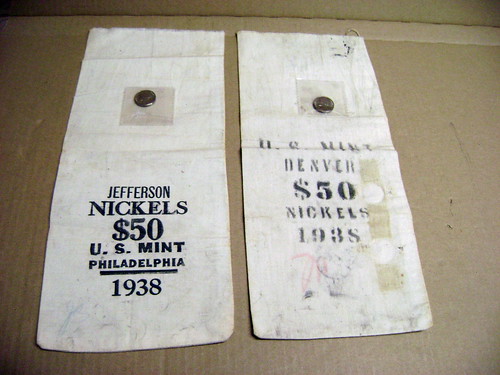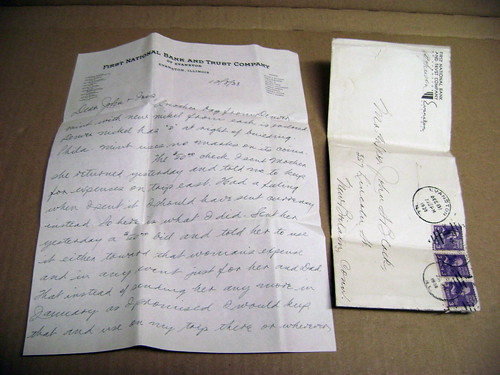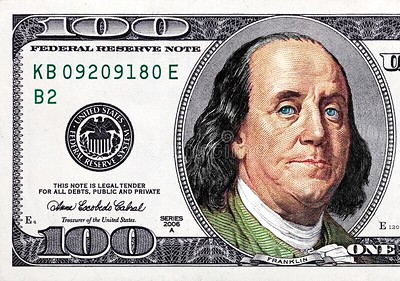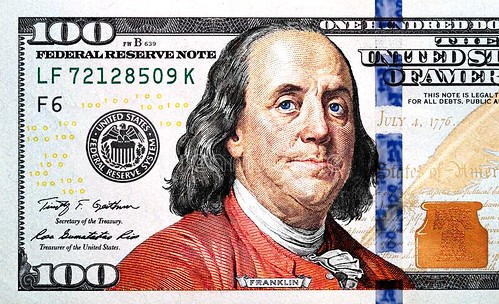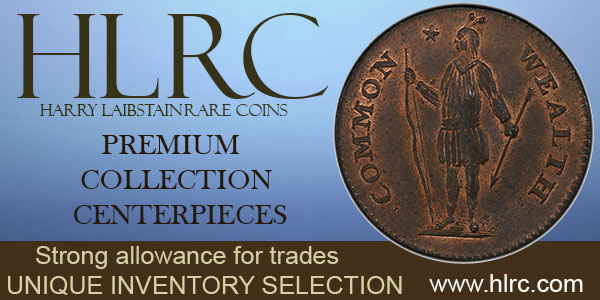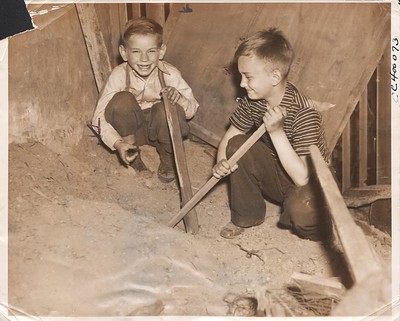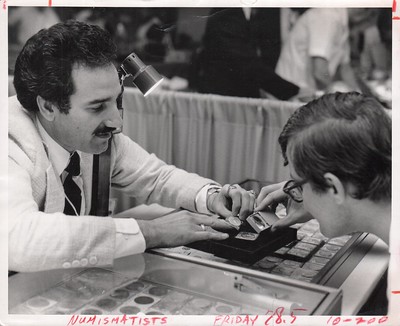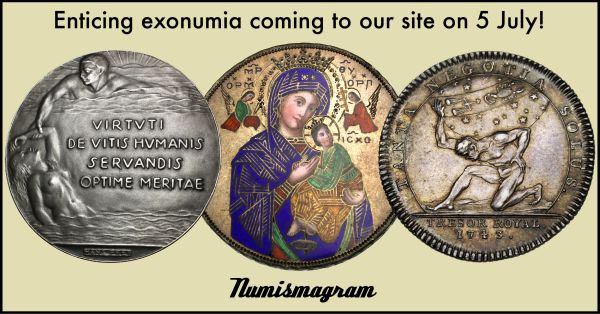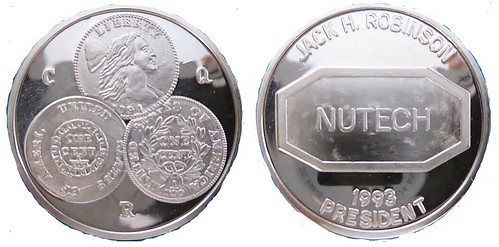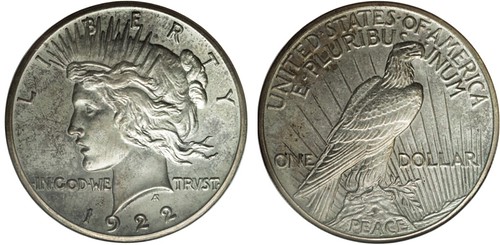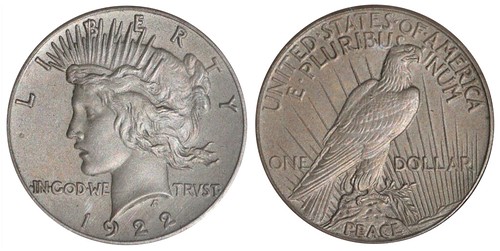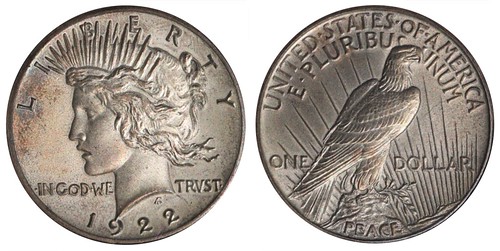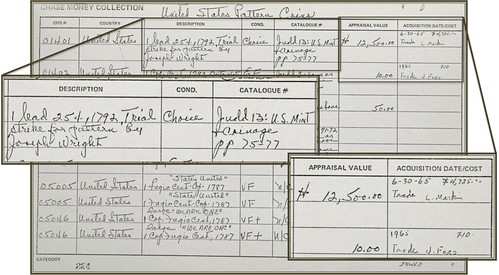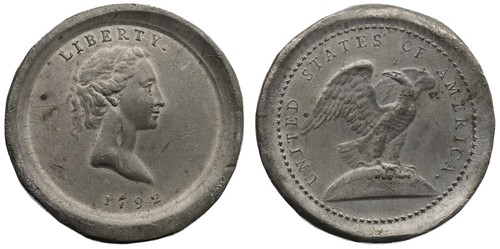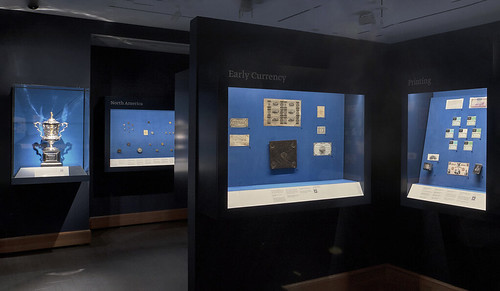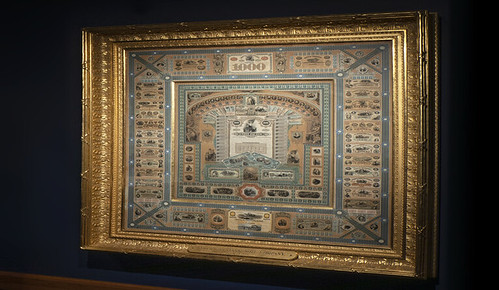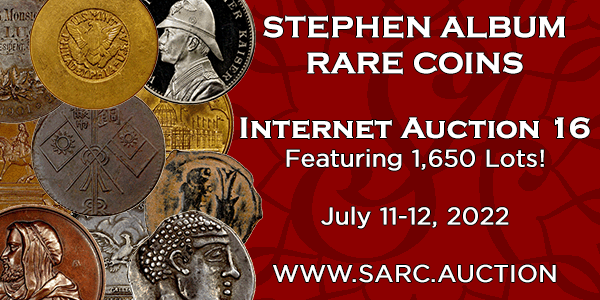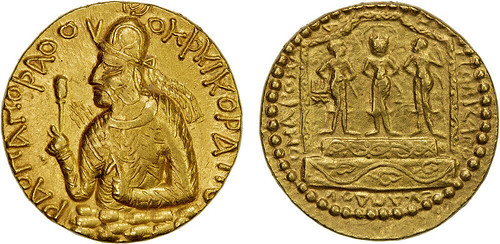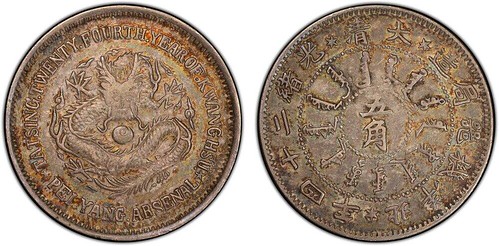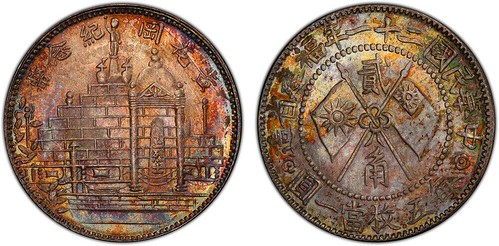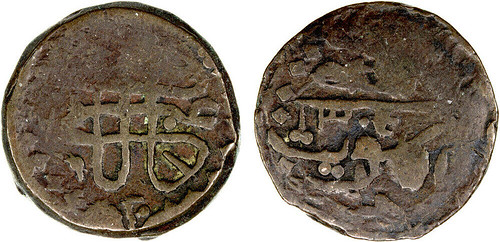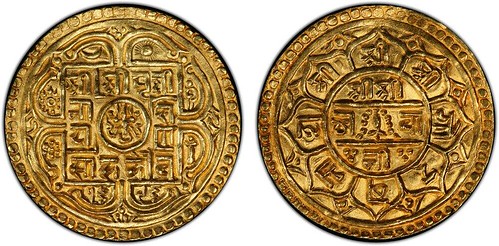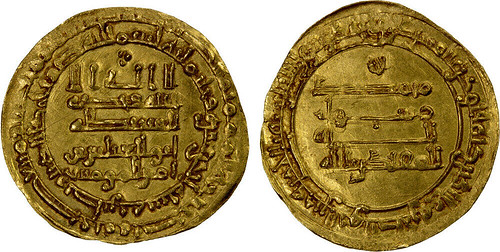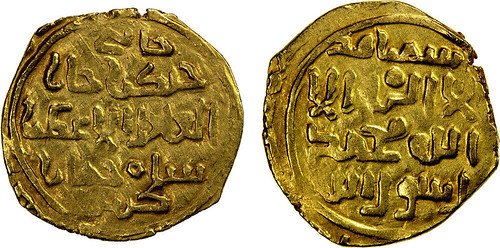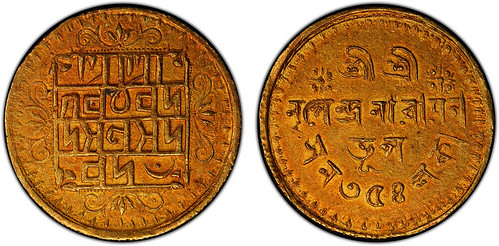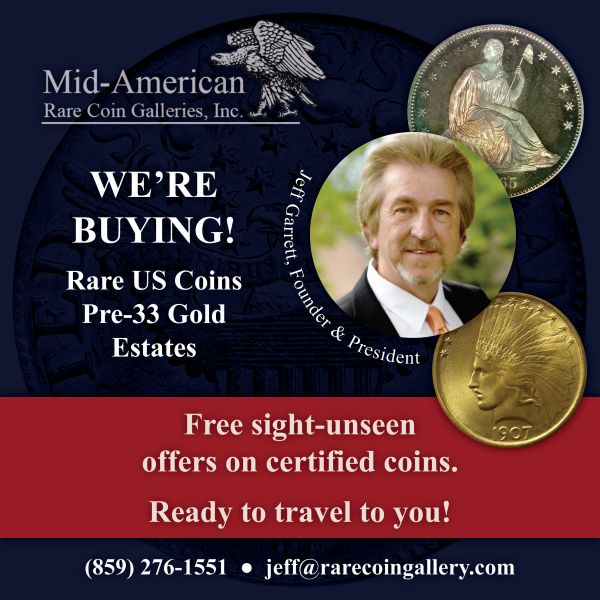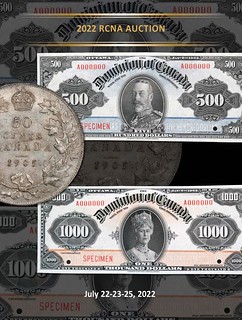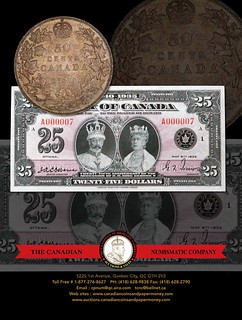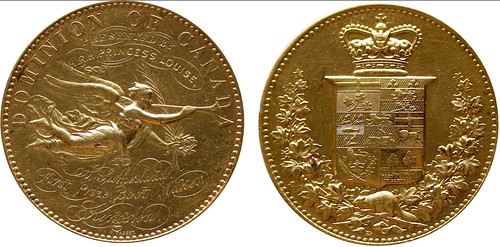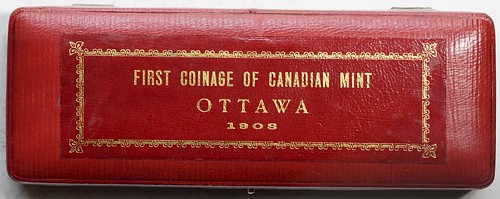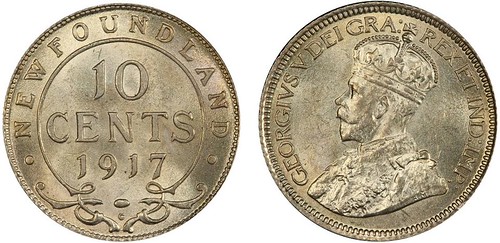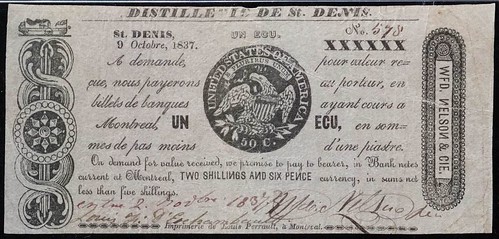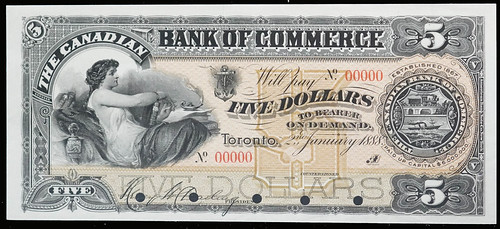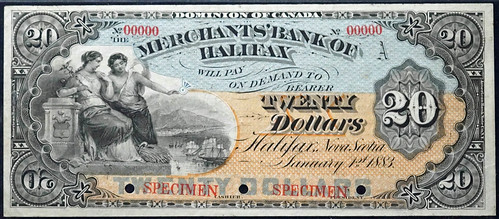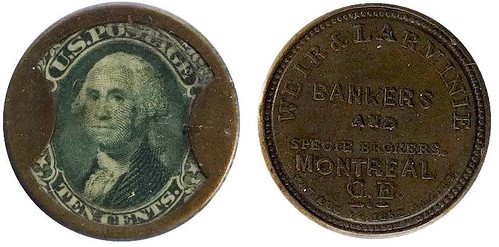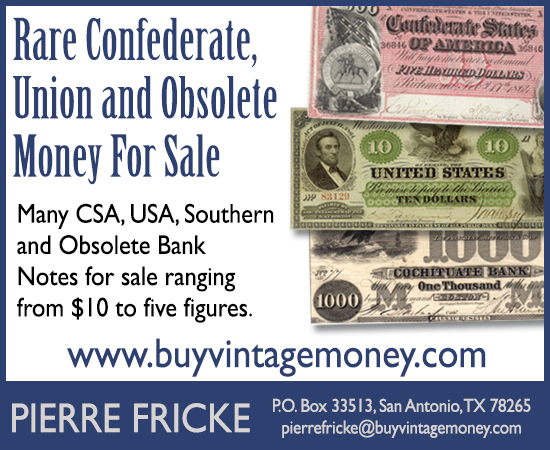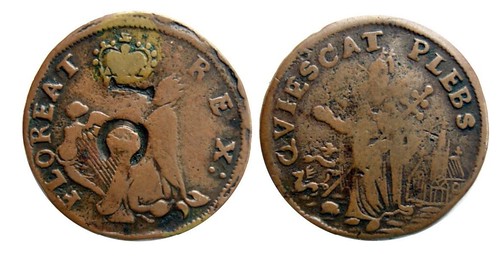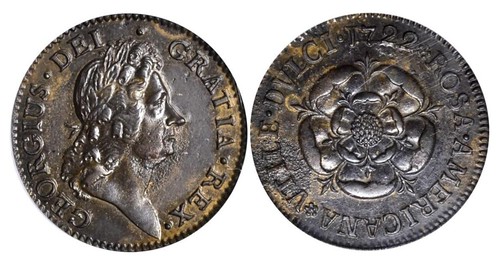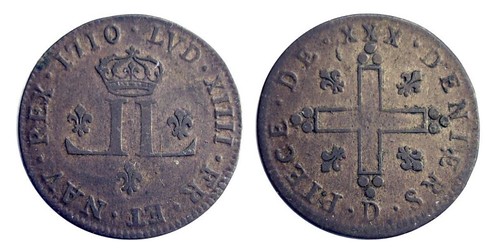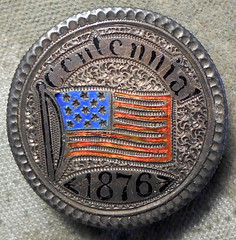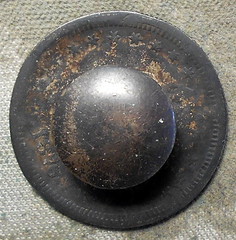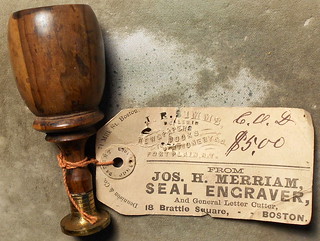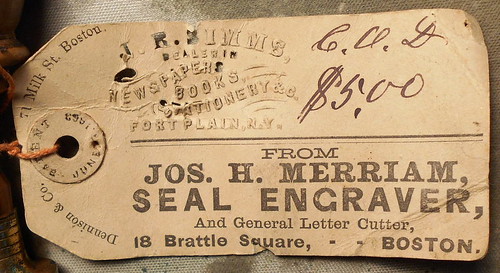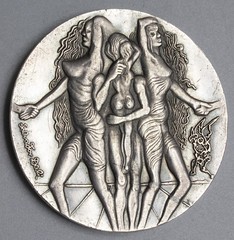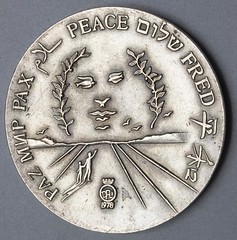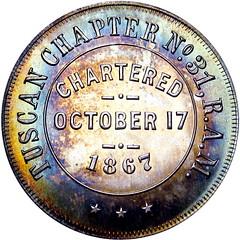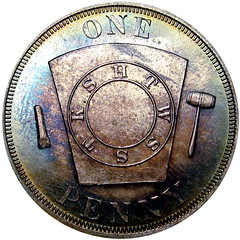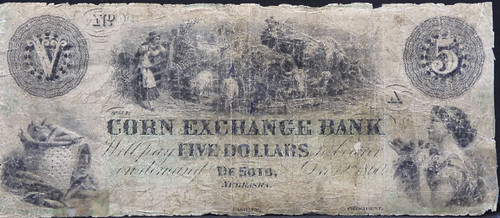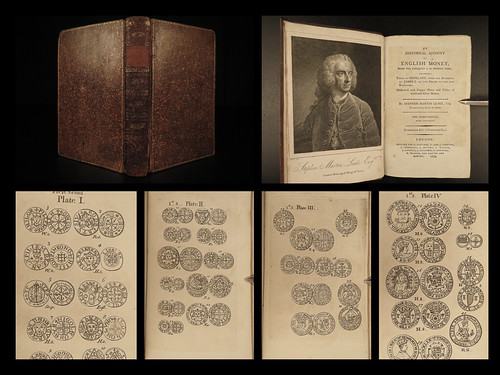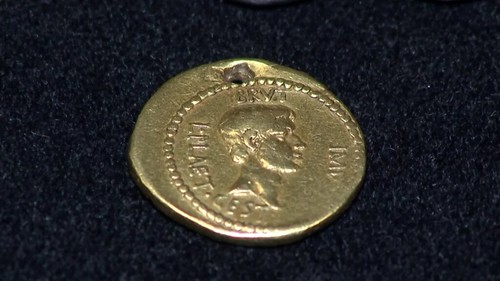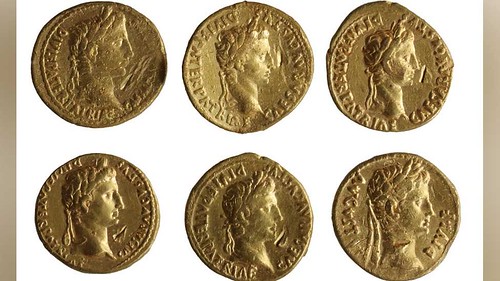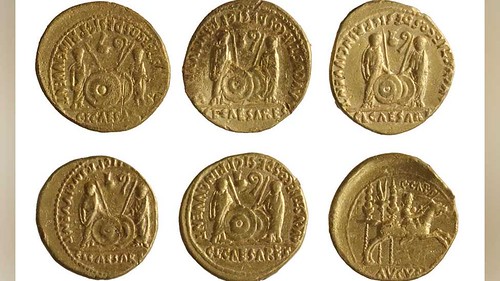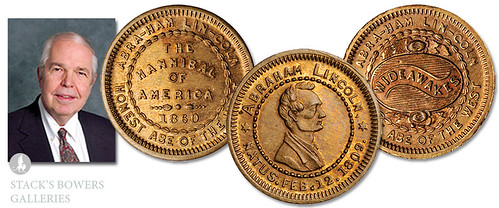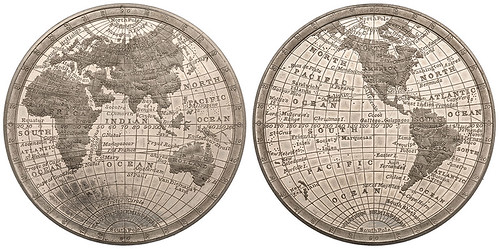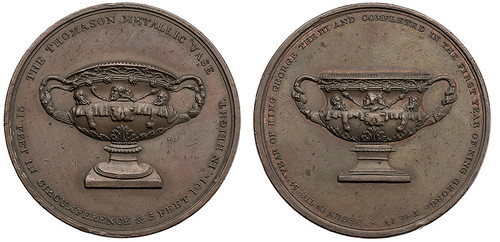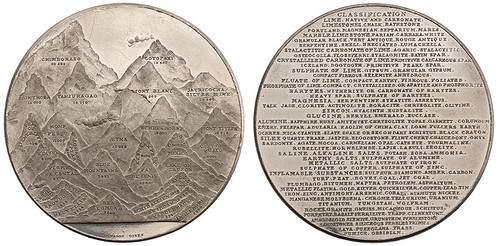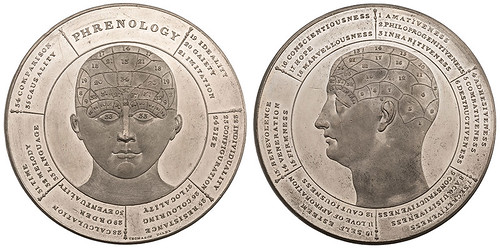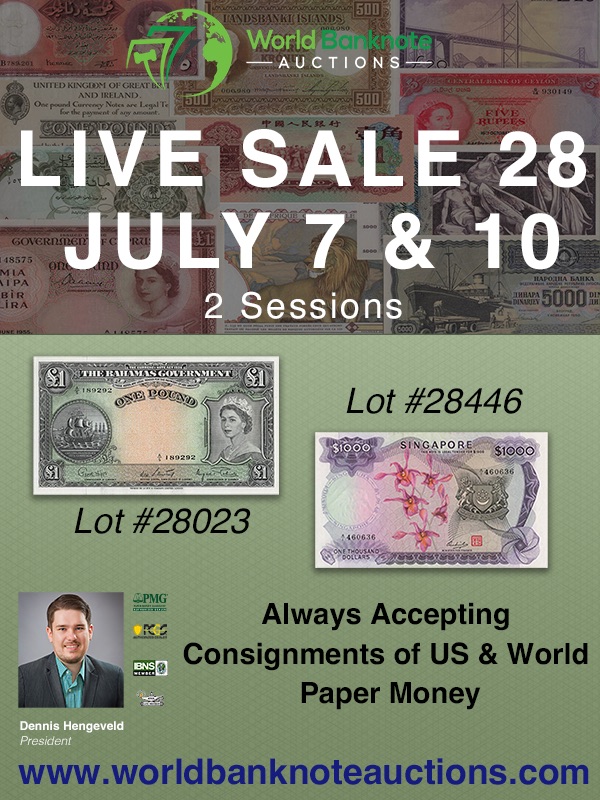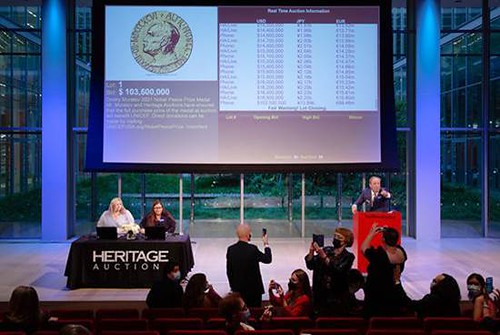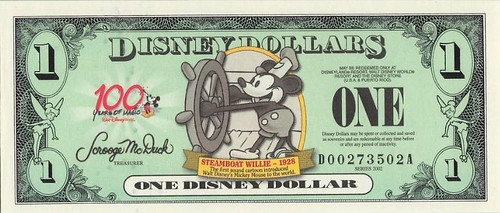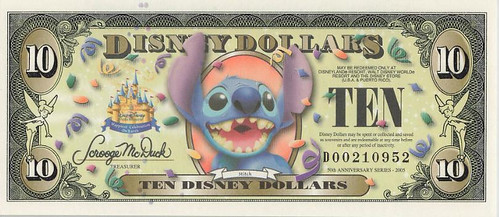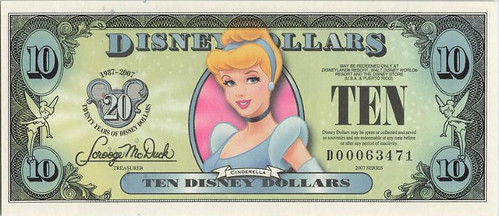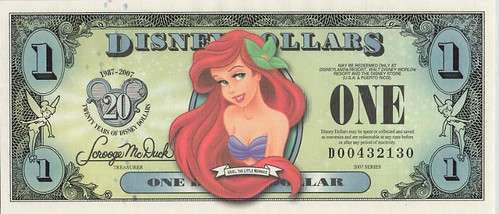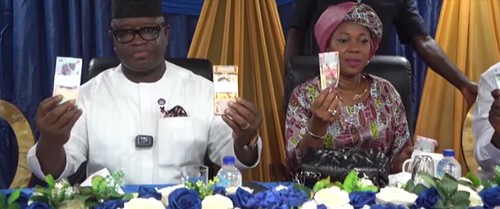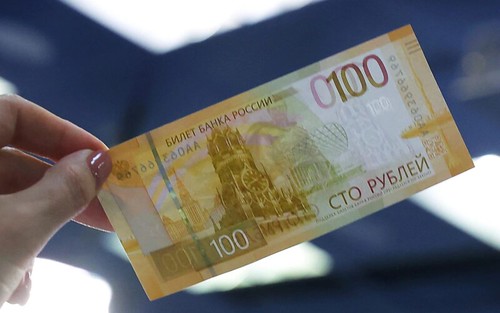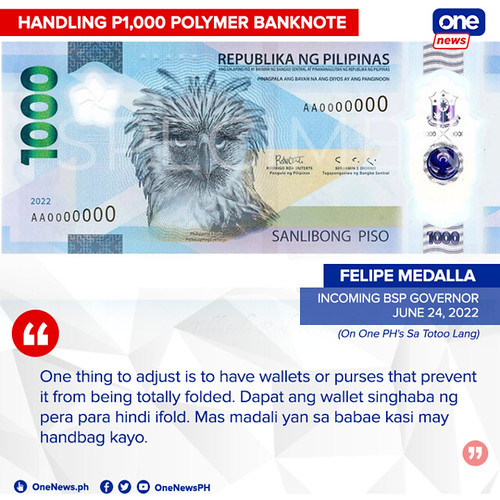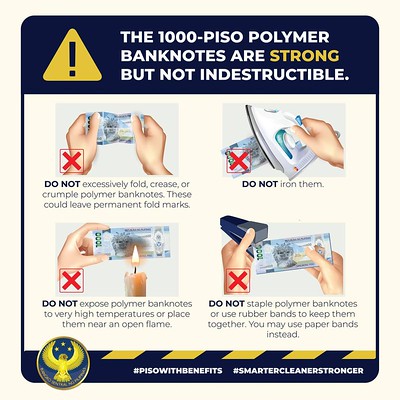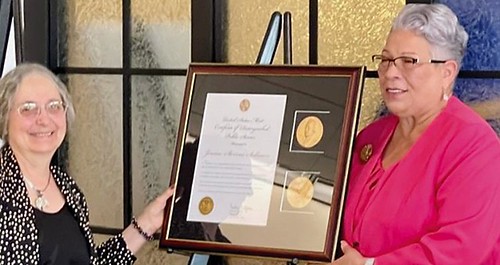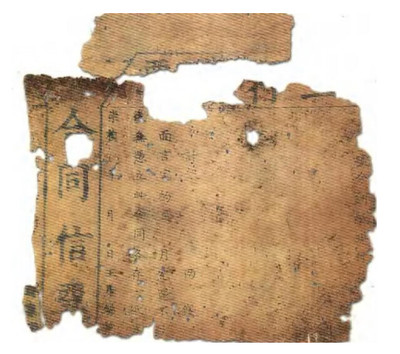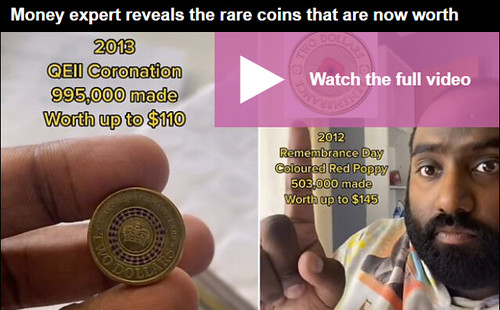
Visit our NBS Sponsors



About UsThe Numismatic Bibliomania Society is a non-profit association devoted to the study and enjoyment of numismatic literature. For more information please see our web site at coinbooks.org SubscriptionsThose wishing to become new E-Sylum subscribers (or wishing to Unsubscribe) can go to the following web page link MembershipThere is a membership application available on the web site Membership Application To join, print the application and return it with your check to the address printed on the application. Print/Digital membership is $40 to addresses in the U.S., and $60 elsewhere. A digital-only membership is available for $25. For those without web access, write to: Charles Heck, Treasurer AsylumFor Asylum mailing address changes and other membership questions, contact Chuck at this email address: treasurer@coinbooks.org SubmissionsTo submit items for publication in The E-Sylum, write to the Editor at this address: whomren@gmail.com BUY THE BOOK BEFORE THE COINSale Calendar |
- WAYNE'S WORDS: THE E-SYLUM JULY 3, 2022
- NEW BOOK: WILLIAM WYON
- NEW BOOK: CHINESE NUMISMATICS
- NEW BOOK: BAHMANI SULTANS THROUGH COINS
- ORIENTAL NUMISMATIC SOCIETY SUMMER 2022
- NUMISMATIC DISCOVERY CART ENGAGES VISITORS
- FRANKLIN MINT'S MEDALLIC HISTORY OF THE U.S.
- VIDEO: 2021 FUN SUMMER CONVENTION
- AUDIO: TWO NEW EPISODES OF THE PLANCHET
- ANS WELCOMES LIBRARY STAFF
- MORE ON THE NEBRASKA CENTENNIAL MEDAL
- NOTES FROM E-SYLUM READERS: JULY 3, 2022
- PHOTOS: DULUTH COIN FIND, HOUSTON ANA DEALERS
- STACK'S BOWERS OPENS BOSTON GALLERY
- VOCABULARY TERM: KEY TAG MEDAL
- JACK H. ROBINSON (1941-2021)
- DON TAXAY'S GREAT TRADE
- PRATT GALLERY SHOWCASES MONEY AND MEDALS
- RIJKSMUSEUM LIBRARY NUMISMATIC EXHIBIT
- STEPHEN ALBUM RARE COINS AUCTION 43 RESULTS
- THE 2022 RCNA AUCTION
- 2022 RCNA AUCTION SELECTIONS
- ROSA AMERICANA FIXED PRICE LIST #23 SELECTIONS
- NUMISMATIC NUGGETS: JULY 3, 2022
- THREE EID MAR COINS IN CHICAGO
- ROMAN GOLD COIN HOARD FOUND NEAR NORWICH
- THE CURIOUS BRAMHALL LINCOLN TOKEN
- SIR EDWARD THOMASON'S SCIENTIFIC MEDALS
- $103.5 MILLION NOBEL PRIZE MEDAL SALE
- STOCKHOLM UNIVERSITY MEDALS
- WORLD BANKNOTE OFFERS DISNEY DOLLARS
- SIERRA LEONE SLASHES 'ZEROS OF SHAME'
- RUSSIA SANCTIONS DELAY 100 ROUBLE BANKNOTE
- DON'T FOLD THOSE NEW POLYMER NOTES
- LOOSE CHANGE: JULY 3, 2022
- AUSTRALIAN COIN NOODLING
Click here to read the thin version on the web
Click here to subscribe
Click here to access the complete archive
To comment or submit articles, reply to whomren@gmail.com
Content presented in The E-Sylum is not necessarily researched or independently fact-checked, and views expressed do not necessarily represent those of the Numismatic Bibliomania Society.
WAYNE'S WORDS: THE E-SYLUM JULY 3, 2022
 New subscribers this week include:
Dr. Harvey Richer, courtesy Darryl Atchison.
Welcome aboard!
New subscribers this week include:
Dr. Harvey Richer, courtesy Darryl Atchison.
Welcome aboard!
Thank you for reading The E-Sylum. If you enjoy it, please send me the email addresses of friends you think may enjoy it as well and I'll send them a subscription. Contact me at whomren@gmail.com anytime regarding your subscription, or questions, comments or suggestions about our content.
This week we open with three new books and a new periodical issue, updates from the Newman Numismatic Portal and the American Numismatic Society, and more.
Other topics this week include engraver William Wyon, the Nebraska Centennial medal, a Duluth coin hoard find, key tag medals, Jack Robinson, Don Taxay, numismatic museum exhibits, auction previews, Sir Edward Thomason's medals, Disney Dollars, zeros of shame, and Australian coin noodling.
To learn more about Chinese numismatics, Parthian coins and culture, the Smithsonian Discovery Cart, the Franklin Mint's Medallic History of the United States, the Bank Note cigar label, Copper Quotes by Robinson, The Great Trade, the silver Naseby Cup, Salvador Dali's Israel Peace medal, phrenology, and the the $103.5 million medal, read on. Have a great week, everyone!
Wayne Homren
Editor, The E-Sylum
NEW BOOK: WILLIAM WYON
This week I learned about an upcoming book by Mark Jones about master engraver William Wyon. It's available for preorder on various websites, but I was unable to find anything yet on the site of the publisher SPINK. Here's the Overview from Barnes and Noble. -Editor
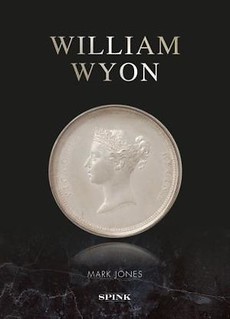 Chief Engraver at the Royal Mint and the leading medallist of his time, William Wyon RA (1795-1851) produced some of the best known and most widely distributed images ever made. His portraits of the young Queen Victoria on the coinage, used throughout the British empire, and the more regal head used for the first postage stamps, the penny red and two penny blue, were reproduced in their millions and distributed all around the globe. A highly regarded modeller in low relief, known and admired for the classical purity of his compositions and the accomplishment of their execution, Wyon was celebrated as a British artist who more than rivalled his continental competitors, favored by royalty and by many of the most prominent and influential figures of his time. The book aims to understand how and why Wyon's work was commissioned and how it was received, using institutional archives, contemporary correspondence, and reminiscence, and the popular press, to create a rounded picture of the life, work, networks, influence, and impact of an artist who was also an entrepreneur on his own account and a public servant at the heart of the establishment.
Chief Engraver at the Royal Mint and the leading medallist of his time, William Wyon RA (1795-1851) produced some of the best known and most widely distributed images ever made. His portraits of the young Queen Victoria on the coinage, used throughout the British empire, and the more regal head used for the first postage stamps, the penny red and two penny blue, were reproduced in their millions and distributed all around the globe. A highly regarded modeller in low relief, known and admired for the classical purity of his compositions and the accomplishment of their execution, Wyon was celebrated as a British artist who more than rivalled his continental competitors, favored by royalty and by many of the most prominent and influential figures of his time. The book aims to understand how and why Wyon's work was commissioned and how it was received, using institutional archives, contemporary correspondence, and reminiscence, and the popular press, to create a rounded picture of the life, work, networks, influence, and impact of an artist who was also an entrepreneur on his own account and a public servant at the heart of the establishment.
Wyon's career began with a major contribution to the execution of the monetary reform that created a new and widely respected coinage which underpinned and symbolized the global growth of the British economy. The medals, which he made throughout his career, reflect their time: commissioned to celebrate and reward the scientific and technological progress, the improvements in education and agriculture, the literary and artistic achievements, the passion for making things better, and recognizing and encouraging those who did, that characterized Wyon's contemporaries.
Almost every major figure of the age is here, from Prince Albert and Queen Victoria, to Palmerston, Peel, Wellington, and Gladstone; from Maria II of Portugal and Mrs Sweetenham Waters to Sir Joseph Banks, Sir Walter Scott, Sir John Soane, and Thomas Telford. And yet the prosperity that enabled his patrons to commission Wyon's work, often came from the profits derived from the long hours and appalling conditions of industrializing Britain, from enslaved labor in the West Indies and from imperial aggression in India and the Far East. Late in his career it was Wyon who was commissioned to create the military and naval medals that recognized and rewarded the service of those who had fought in the Napoleonic wars; of those who had played a part in the establishment of British rule in India, and those who fought in contemporary wars in Afghanistan, India, and Burma, and to force opium on China: medals which, despite moments of revulsion in parliament and the press, reflected pride in Britain's growing empire.
Wyon's work throws new light on the attitudes and networks that lay behind official commemoration at a time of ebullient energy and rapid change and holds a hitherto unexamined mirror to the British establishment in the first half of the nineteenth century. The close interrogation of things, of obstinate objects which insist on remaining themselves, provides us with an image which manages to be both arcane and popular, utterly conventional and intriguingly unexpected.
Product Details
ISBN-13: 9781912667796
Publisher: Spink & Son, Ltd
Publication date: 09/13/2022
Pages: 400
Product dimensions: 8.20(w) x 11.60(h) x (d)
For more information, or to order, see:
William Wyon
by Mark Jones
(https://www.barnesandnoble.com/w/william-wyon-mark-jones/1140030086)
William Wyon Hardcover – August 30, 2022
(https://www.amazon.com/William-Wyon-Mark-Jones/dp/1912667797)
https://spinkbooks.com/
THE BOOK BAZARRE
R.S. Yeoman and His Remarkable Red Book,also tells the history of Whitman Publishing as well as his own unique life story in and out of numismatics. Enjoy more than 100 years of fascinating numismatic history in 352 richly illustrated pages, 8.5 x 11 inches, hardcover. Order your copy online at Whitman.com , or call 1-800-546-2995.
NEW BOOK: CHINESE NUMISMATICS
SPINK has published a new book on Chinese Numismatics by Helen Wang, François Thierry and Lyce Jankowski. -Editor
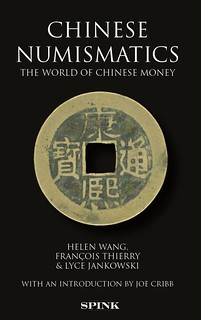 This is the first book to explore the history of the field of Chinese numismatics from both Eastern and Western perspectives. Consisting of four papers that complement each other beautifully, it gives a sound introduction to the study of Chinese numismatics, focusing on the 19th century and, crucially, how to think about Chinese money.
This is the first book to explore the history of the field of Chinese numismatics from both Eastern and Western perspectives. Consisting of four papers that complement each other beautifully, it gives a sound introduction to the study of Chinese numismatics, focusing on the 19th century and, crucially, how to think about Chinese money.
In Currencies of Ancient China from their Origins to the Late Empire, François Thierry notes how Europeans sometimes understood Chinese money and sometimes got it completely wrong. In Numismatic Friendship: Social Networks of Numismatists and Coin Collectors During the Late Qing Dynasty, Lyce Jankowski opens up the world of Chinese collectors of Chinese coins, their networks and motivations. In A Short History of Chinese Numismatics in Western Languages, Helen Wang surveys publications to 1900, giving information about the authors, their occupations, motivations and areas of interest; and in Chinese Money Matters, So Why Does It Have Such a Low Profile? she looks at the current situation, and offers routes into the field. In his Introduction, Joe Cribb reflects on his study of Chinese money and how it has informed his career in numismatics.
Chinese Numismatics: the World of Chinese Money
by Helen Wang, François Thierry and Lyce Jankowski
Hardback, with colour illustrations throughout
216 x 138mm
176 pages
£30.00
For more information, or to order, see:
Chinese Numismatics: the World of Chinese Money HELEN WANG, François THIERRY & LYCE JANKOWSKI WITH AN INTRODUCTION BY JOE
(https://spinkbooks.com/products/chinese-numismatics-the-world-of-chinese-money-helen-wang-francois-thierry-lyce-jankowski-with-an-introduction-by-joe)
NEW BOOK: BAHMANI SULTANS THROUGH COINS
An article in The Hindu announces a new book on coins of the Bahmani Sultans from the 14th to 16th centuries. -Editor
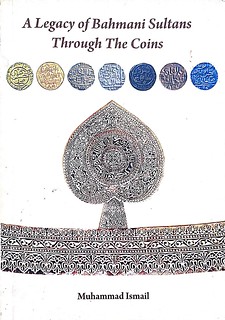 The Gulbarga Bahmani Numismatics Research and Educational Trust recently published a book titled ‘A Legacy of Bahmani Sultans through coins' authored by Numismatist Mohammad Ismail in which he depicts the numismatic journey of Bahmani Sultans through his collections.
The Gulbarga Bahmani Numismatics Research and Educational Trust recently published a book titled ‘A Legacy of Bahmani Sultans through coins' authored by Numismatist Mohammad Ismail in which he depicts the numismatic journey of Bahmani Sultans through his collections.
The book traces the journey of coins belonging to all the 18 Bahmani Sultans starting from Alauddin Hasan Bahman Shah (1347-58), till the last Sultan - Kalimullah Shah (1526-1538). Mr. Ismail has meticulously worked, richly illustrated, about each coin issued during Bahmani Sultans period.
Mr. Ismail has got a rare treasure of antique coinage, belonging to Bahmani Sultans from 14th Century to 16th Century. The numismatist has more than 2,500 coins in his collection of various rulers, dynasties and kingdoms. Among his treasury are also coins dating back to 1,600 years ago.
The numismatist also organises a campaign Save Coin Save Heritage.
The objective of this campaign is to spread awareness about ancient coins at schools and to take forward the legacy to younger generations.
Speaking to The Hindu, the numismatist explained the legacy of Bahmani Sultans and displayed a collection of nearly 80 copper coins issued in one year period between 1378-1379, and said that all the four Sultans including Dawood Shah-I, Muhammad Shah-II, Ghiyasuddin Tahmathan Shah, Shamshuddin Dawood Shah–II (4th, 5th, 6th and 7th sultans, respectively), have ruled for less than a year. His collection has got nearly 500 coins issued during Tajuddin Firoz Shah (8th Bahmani sultan), followed by 400 coins of Muhammad Shah-I (the second Bahmani sultan), and 300 coins of Kalimullah Shah (18th Bahmani sultan) Period.
Some of the rarest coins in his collections are of Tahmatun Shah, Dawood Shah, Ahmed Shah III, Muhammad Shah IV and Mujahidin Shah. Mr. Ismail's rare collection includes 10 copper and one gold and silver coin minted during the Tahmatan Shah period. It took him eight years to find those coins. His collection also includes the rare gold and silver coins of Ahmed Shah II and Mujahidin Shah.
To read the complete article, see:
Numismatist tells legacy of Bahmani Sultans through coins
(https://www.thehindu.com/news/national/karnataka/numismatist-tells-legacy-of-bahmani-sultans-through-coins/article65592779.ece)
ORIENTAL NUMISMATIC SOCIETY SUMMER 2022
Journal of the Oriental Numismatic Society Editor Dr. Paula Turner submitted this information about the Summer 2022 issue. Thank you! -Editor
CONTENTS:
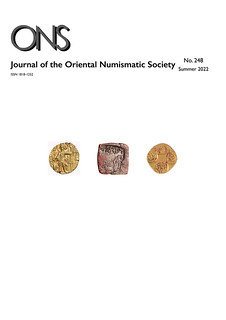 A Letter from Your Secretary General
A Letter from Your Secretary General
Pankaj Tandon
Note from Your New Editor
Paula Turner
Audumbara Coins with New Features and Disposition of Legends
Devendra Handa
A Hoard Parcel of Late Kushan Gold Dinars
Joe Cribb and K. K. Maheshwari
New Gold Coins of the Paramara King Jagadeva
Deme Raja Reddy
A Preliminary and Metallurgical Study on the Chola, Chinese
and Venad coins from Thankasseri, Kollam
Hari Sankar B. and Sarath Chandra Babu
ONS News
North America Meeting 15 January 2022
Europe Meeting 7 May 2022
Book reviews
Zhong guo xi zang qian bi tu lu
[Illustrated catalogue of the currency
of Tibet, China]
by Yin Zhengmin
Hunnic Peoples in Central and South Asia: Sources for their origin and history, edited by Da´niel Balogh
The Alkhan: A Hunnic people in South Asia
by Hans T. Bakker
Rivalling Rome: Parthian coins and culture
by V. Curtis and A. Magub
Guqian jipin [Exceptional Rarities among the Ancient Coins
by Huo Hongwei [in Chinese]
A Letter from Your Secretary General
Dear ONS members,
In mid-March, I sent out a message to all members for whom we had an email address. This message will repeat some of the same information, so that I can reach all members, but it will also update my earlier message. Before I continue, however, I would like to appeal to those of you who have not yet furnished your regional secretary with your email address to please do so without delay. Not only can the Society communicate quickly and easily with you via email, but we will also be able to inform you of upcoming meetings, many if not all of which will be accessible to you by Zoom.
My first very pleasant task is to welcome the new editor of the journal, Dr Paula Turner. Paula has been a member of the Society for over forty years and has had a lifelong fascination with ancient history and archaeology, which led to her PhD research into the Roman trade with India. She published part of this research in her book, Roman Coins from India, published jointly by the Institute of Archaeology and the Royal Numismatic Society in 1989 and she is currently preparing an updated edition of this. She has spent her working career in academic publishing and, in addition, has taught Latin and Classical Greek for many years. Please join me in welcoming Paula to her new role.
I would like to invite you to submit articles for possible publication in JONS. Articles can be full-length research papers or shorter contributions pointing to new discoveries or to interesting coins. We are also looking for book reviews; if you would like to see a book reviewed, please recommend it. Finally, we are thinking of starting a Letters to the Editor section in the journal. Send your contributions, letters or queries to Paula at onseditor@gmail.com. Also, if you submitted a paper earlier and it has not yet been published, please re-submit it to Paula in case it has been misplaced or lost.
With Paula's assumption of the editorship, we can expect the journal to return to regular publication every three months and to expand again closer to the size it had attained under Stan Goron. You will find Paula to be responsive to your communications and can look forward to a much improved journal.
The Society plans to embark on a major new initiative: the creation of a website that would have the long-term goal of cataloguing all the coins and paper currency within the purview of the ONS. The site would afford members the opportunity to upload images and details of coins in their collections (whether anonymously or not, at the member's discretion) and would display the coins in a logical, pleasing manner for the visitor. The site could become not only a catalogue but also a database for researchers. I would also love to see it use pattern recognition technology to permit a visitor to upload images of a coin and request its identification. Finally, I envision a site which will also be a virtual museum, where visitors can browse the catalogue the way they might wander through a museum.
Initial response to this idea has been enthusiastic. Many of you wrote to me pointing out that the website Zeno.ru already does much of this. Of course, I am very aware of Zeno and use it regularly for my own research. I spoke to Vladimir Belyaev in February and we have agreed to work together. But this is not a project that can be accomplished in a couple of months. So stay tuned and be patient. I will try to keep you informed of our progress. If you have specific thoughts about and ideas on how to implement this vision, please write to me at secgen.ons@gmail.com.
I would also like to invite you to write to me at the same email address (secgen.ons@gmail.com) any time with your ideas on ways in which the Society can better serve your needs.
With warm regards,
Pankaj Tandon
That's great news about the planned website. Good luck with the project! -Editor
NUMISMATIC DISCOVERY CART ENGAGES VISITORS
Newman Numismatic Portal Project Coordinator Len Augsburger attended the opening of the National Numismatic Collection's newest exhibit and provided the following report. -Editor
National Numismatic Collection Engages Visitors
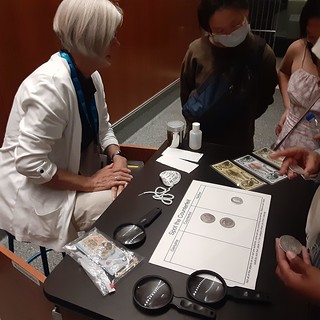 While attending the opening of the Really BIG Money exhibit at the Smithsonian on June 8, I could not help but take notice of the
While attending the opening of the Really BIG Money exhibit at the Smithsonian on June 8, I could not help but take notice of the Discovery Cart
parked nearby the entrance of the Value of Money exhibit in the National Museum of American History. Staffed by volunteers, the Discovery Cart
challenges passers-by to sort genuine and fake numismatic objects, including coins and paper money.
The cart was constantly surrounded by a good number of visitors and the back-and-forth with the volunteer was lively. While there are any number of numismatic non-profits worthy of our support, the high level of numismatic engagement with the public in this case deserves mention.
Great idea. Please consider donating, and if you live in the area, consider becoming a volunteer. A worthy effort! -Editor
Link to donate to the National Numismatic Collection:
https://amhistory.si.edu/donate/numismatics/
Link to the National Numismatic Collection online catalog:
https://americanhistory.si.edu/collections/object-groups/national-numismatic-collection
FRANKLIN MINT'S MEDALLIC HISTORY OF THE U.S.
Newman Numismatic Portal Project Coordinator Len Augsburger also submitted this from NNP intern Kellen Hoard. -Editor
The Franklin Mint's Medallic History of the United States
NNP intern Kellen Hoard reports on the Franklin Mint's Medallic History of the United States medal series:
As I arrived home in Seattle on Thursday from the ANA Summer Seminar, I was greeted by fireworks being set off throughout my neighborhood—five days early—by those eager to celebrate Independence Day and show birds who is boss. This premature celebration occurs every year, and though some near me welcome it and some despise it, I take it as an opportunity to begin my reflection on the state of the nation a few days early. Amidst the celebration, I look to consider what I feel the values of the United States should be, whether we are collectively living up those values, and how I can play a better role in contributing to the country moving in the direction I believe it should.
But for numismatists such as ourselves, the booming of fireworks are not the sole catalysts for reflection on subjects such as these. While collecting, I find myself continually encountering tangible manifestations of how this country and its citizens wished to represent themselves over the centuries. From early American paper money to Civil War tokens to Congressional medals modern commemorative coins, it is possible to see how different Americans through time viewed their own country and what its ideals should be. We seem to be particularly honest about our perspectives on and values for our nation when it is on our money and exonumia. I find it, personally, fascinating.
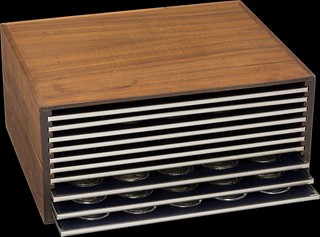 In the course of my work with the Newman Numismatic Portal this summer, I came across an interesting photo which returned my attention to this idea of sharing our American values through numismatic objects. The image was of a Franklin Mint set titled
In the course of my work with the Newman Numismatic Portal this summer, I came across an interesting photo which returned my attention to this idea of sharing our American values through numismatic objects. The image was of a Franklin Mint set titled Medallic History of the United States,
which contained 200 silver medals that purportedly featured the major events of each year between the Declaration of Independence and the Bicentennial on their obverse and reverse. Immediately, my curiosity was piqued by which events were deemed worthy by the Franklin Mint for these medals, and how the definition of major event
could vary wildly depending on the Mint's perspective on American progress.
The events featured vary wildly, from the 1777 adoption of the Articles of Confederation to the 1869 Black Friday
panic to the 1904 first pitch of Cy Young to the 1965 Northeastern blackouts to the 1973 Vietnam War ceasefire. At first glance, there seems to be almost no pattern. But when observing the hundreds of events listed, it became clear that a trend did exist. It was a trend of consistent setbacks for our nation—British invasions, slave importations, ill-advised conflicts, terrible laws—paired with instances of genuine American dedication to overcome those setbacks, including American international cooperation, the Emancipation Proclamation, the organization of movement against war, and the passage of superceding and progressive legislation.
The Franklin Mint series did not hold back on including some of the worst, most embarrassing, most devastating moments in our country's history. But the Mint also demonstrated the power of Americans to address those flaws and those mistakes when there is the willpower to do so. It drew a 200-year picture, numismatically, of the progress we have made—and room for progress we can still make. As we approach July 4, I think it is worth it for us to take a lesson (for probably the only time) from the Franklin Mint, and reflect on the history our nation, good and bad, so that we might determine a path forward that addresses its flaws, celebrates its achievements, and improves our path forward in perpetuity.
That's exactly the sentiment I take from the phrase "to form a more perfect Union" in the Preamble of the U.S. Constitution. It will never be perfect in everyone's mind, but collectively we argue and fight over imperfections real and perceived in order to make things better than before. Happy holiday, fellow citizens. -Editor
Image: The Newman set of Medallic History of the United States
Link to Eric P. Newman's set of the Medallic History of the United States series:
https://coins.ha.com/itm/20th-century-tokens-and-medals/franklin-mint-s-sterling-silver-medallic-history-of-the-united-states/a/1283-15057.s
VIDEO: 2021 FUN SUMMER CONVENTION
These are selections from the David Lisot Video Library that feature news and personalities from the world of coin collecting. David has been attending coin conventions since 1972 and began videotaping in 1985. The Newman Numismatic Portal now lists all David's videos on their website at:
https://nnp.wustl.edu/library/multimediadetail/522852
Here's one from last year's Summer FUN show. -Editor
Amazing Numismatic Walkabout at the FUN Summer Convention 2021.
July 8-10, 2021.
David Lisot, Interviewer, CoinTelevision.com
23:26
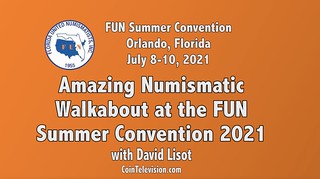 In 2021 after being shut down by the coronavirus for more than a year and a half the Florida United Numismatists were able to hold a coin convention. David Lisot hosts and talks to bourse chairman, Cindy Wibker, as she describes what was involved putting on the show. He interviews Bernard von NotHaus about the story of the new Liberty Dollar and the book that explains the history of how and why it was created. He talks to John Miller of CONECA who shows error coins, Jack Alexander about 1795 coinage, Curtis White who helped recover the Atocha sunken treasure and more exciting coin stories.
In 2021 after being shut down by the coronavirus for more than a year and a half the Florida United Numismatists were able to hold a coin convention. David Lisot hosts and talks to bourse chairman, Cindy Wibker, as she describes what was involved putting on the show. He interviews Bernard von NotHaus about the story of the new Liberty Dollar and the book that explains the history of how and why it was created. He talks to John Miller of CONECA who shows error coins, Jack Alexander about 1795 coinage, Curtis White who helped recover the Atocha sunken treasure and more exciting coin stories.
David adds:
"If you have never been to a Florida United Numismatists Coin Convention this video will give you a taste of all of what you might expect to experience. The FUN Summer Convention is usually held in July and is about a third the size of the January show with just under 300 tables. Last year the 2021 convention had collectors and dealers coming out for the first time as the threat of COVID was diminishing. I talked to all kinds of numismatic folks and heard some great coin stories. Summer FUN is this week in Orlando July 7-9, 2022. If you want a great numismatic experience with lots of business, buying and selling, educational seminars and camaraderie you might want to attend a FUN Convention!"
An excerpt of the video is available for viewing on the Coin Television YouTube Channel at:
https://youtu.be/TpGqmuDOBCM
AUDIO: TWO NEW EPISODES OF THE PLANCHET
Two new episodes of the American Numismatic Society podcast The Planchet have been released. -Editor
Len Augsburger and the Newman Numismatic Portal
Season 3 of The Planchet podcast continues with a conversation with Len Augsburger, Executive Director of the Newman Numismatic Portal. In this episode, we talk about Len's numismatic trajectory, how he met Eric P. Newman, the origin story of the Newman Numismatic Portal, how to use the NNP, and what's coming next.
Total Time: 39 minutes
For more information, or to listen:
S3, Ep. 2. Len Augsburger and the Newman Numismatic Portal
(https://numismatics.org/pocketchange/03-02/)
2022 Eric P. Newman Graduate Summer Seminar
After a two-year hiatus because of COVID-19, the Eric P. Newman Graduate Summer Seminar in Numismatics returned in 2022 for in-person instruction and research. This edition of the Planchet contains brief conversations with Seminar director Peter van Alfen and visiting professor Jérôme Jambu, plus the cohort of five Seminar students from American University, the University of Chicago, the University of Southern California, the University of Texas at Austin, and Yale University.
Total Time: 35 minutes
For more information, or to listen:
S3, Ep. 3. Conversations at the 2022 Eric P. Newman Graduate Summer Seminar in Numismatics
(https://numismatics.org/pocketchange/03-03/)
ANS WELCOMES LIBRARY STAFF
One new staffer and two interns have begun working at the library of the American Numismatic Society in New York. These reports were published in the July 2022 issue of the ANS eNews. Great news! -Editor
Library Assistant and Cataloger Jared Goldfarb
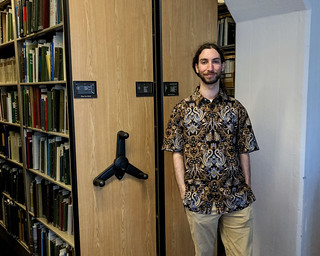 In June, Jared Goldfarb joined our staff as Library Assistant and Cataloger. Jared first came to the ANS in early 2019 as a volunteer, having been referred by one of his professors at Binghamton University, Dr. Nathanael Andrade, a graduate of the ANS's Summer Seminar. Jared majored in history and classical studies as an undergraduate and decided to attend library school after working here in the Library, completing his masters in May and at the same time finishing a separate masters in history. During his three years as a volunteer, Jared cataloged a full range of materials, including various specialized items, such as 18th century French pamphlets and small collections of archival materials, and so he was able to step seamlessly into his new position.
In June, Jared Goldfarb joined our staff as Library Assistant and Cataloger. Jared first came to the ANS in early 2019 as a volunteer, having been referred by one of his professors at Binghamton University, Dr. Nathanael Andrade, a graduate of the ANS's Summer Seminar. Jared majored in history and classical studies as an undergraduate and decided to attend library school after working here in the Library, completing his masters in May and at the same time finishing a separate masters in history. During his three years as a volunteer, Jared cataloged a full range of materials, including various specialized items, such as 18th century French pamphlets and small collections of archival materials, and so he was able to step seamlessly into his new position.
Intern Jacob Rosenzweig
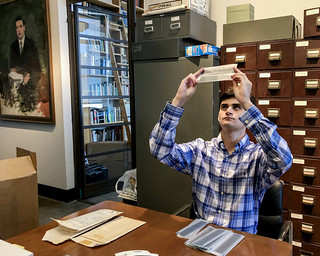 Jacob Rosenzweig, who just completed his sophomore year at Duke University, where he is studying classical languages and political science, has been organizing the seal and gem portion of our Michael Shubin archival collection, sorting through thousands of images and photographing object impressions for eventual upload to our archival database.
Jacob Rosenzweig, who just completed his sophomore year at Duke University, where he is studying classical languages and political science, has been organizing the seal and gem portion of our Michael Shubin archival collection, sorting through thousands of images and photographing object impressions for eventual upload to our archival database.
Intern Deborah Hanyang Chen
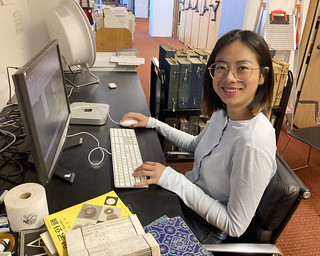 Deborah Hanyang Chen, a New York University student and classics major, continues the ongoing project of cataloging nineteenth- and early twentieth-century books in our Reilly East Asian collection, creating records in English and pinyin and rendering the titles and names in Chinese, Japanese, and Korean characters.
Deborah Hanyang Chen, a New York University student and classics major, continues the ongoing project of cataloging nineteenth- and early twentieth-century books in our Reilly East Asian collection, creating records in English and pinyin and rendering the titles and names in Chinese, Japanese, and Korean characters.
For more information on the ANS Library, see:
The Harry W. Bass Jr. Library
(https://numismatics.org/basslibrary/)
MORE ON THE NEBRASKA CENTENNIAL MEDAL
We recently discussed a Nebraska state anniversary medal. Jan Monroe passed along this chapter on the subject from his upcoming book on state anniversary numismatics. Thanks! Jan notes that "This information was also developed by John Veach of Lincoln, Nebraska. He assisted me with my research." -Editor
The designer, David W. Seyler described the symbolism of the design as follows:
"The obverse side symbolizes Nebraska from east to west. The pioneer tree planter planting a
cottonwood tree honors Arbor Day, which originated in Nebraska. On the branch of the tree is a
Meadowlark, the state bird. Beneath the tree is native prairie grass, typical of the Nebraska
plains. In the center right is the cabin at the Homestead National Monument, the first homestead
cabin in the west. Towering above the cabin is the American Elm.On the left of the medal by the
right foot of the tree planter is the Goldenrod, the state flower. Above the state flower on an
open range is a herd of cattle. Here, too, the Platte River winds into the distant sandhills. On the
horizon, beyond the sandhills is Chimney Rock, a famous western Nebraska landmark and now
also a National Monument. The two monuments connect west with east. The arrowheads
circling the medal honor the Indians part in our state's history.The reverse side features the state
capitol building, standing alone before an endless sea of grass, prairie, sandhills, and bluffs
stretching westward. In the sky are windswept clouds typical of the plains country. In the
foreground is a quotation from Walt Whitman's Leaves of Grass
selected as being most apropos
of Nebraska's potential.The border radiates out like the points of a compass toward the many
futures of the state inscribed on the outermost border. The ever-present life-giving Nebraska sun
is featured on both sides of the medal. On the obverse it touches the golden throat of the
Meadowlark, a symbol of beauty and song. On the reverse, it extends down into the chambers of
the Legislature."
Obv. In the lower left of center is a pioneer with a shovel digging around a tree. A cabin is shown to the right rear with large trees surrounding it and with rays of sunshine from a large sun in the upper left quadrant. At the top around are the words HONOR TO OUR HERITAGE. Below around are the words DEDICATION TO OUR FUTURE. To the left around is the date 1867 and to right around is the date 1967. A border of arrowheads separates the center of the medal from the words.
Rev. In the center is a low frontal view of the state capitol building. The sun illuminates the building from the upper left with clouds behind. Below in exergue are the words IN THIS BROAD EARTH OF OURS /...ENCLOSED AND SAFE WITHIN / ITS CENTRAL HEART NESTLES / THE SEED PERFECTION. Around the center are the following words AGRICULTURE / SCIENCE / LABOR / RECREATION / INDUSTRY / THE ARTS / EDUCATION / COMMERCE.
(1966-004) NE-1967-2
**Note: A two-piece proof set, limited to five hundred sets, was issued for the price of $37.50. The medals are in a white acrylic holder like the state of Nebraska. Only 100 sets were available for out of state buyers.
*Edge marked .999+ PURE SILVER and serially numbered.**Edge marked MEDALLIC ART CO. NY. BRONZE***A total of 37 platinum medals were offered but only ten were struck. Of the ten, just eight were sold and the remaining two were returned to the Medallic Art Company for melting. Edge marked MEDALLIC ART CO, NY. PLATINUM. The Platinum medals were individually serially numbered. One of the Platinum medals is in the Nebraska Historical Society collection.
Prices listed were for mail order. The medals could be purchased for slightly less at local banks.
NEBRASKA STATE CAPITOL BUILDING
PRESENTED BY
THE NEBRASKA CENTENNIAL COMMISSION
JUNE 14, 1967
REPLICAS OF THE SCULPTOR'S ORIGINAL MODELS FOR
THE OFFICIAL CENTENNIAL MEDAL
PROFESSOR DAVID W. SEYLER, SCULPTOR
Jan adds:
"The book is a catalog of state anniversary exonumia for all 50 states and the US territories. The tentative title is Official and Semi-Official State Anniversary Exonumia. The scope includes US Government medals. It doesn't include city or county anniversaries. The anniversaries include discovery, exploration, first settlement, becoming a territory and statehood."
We'll look forward to the book! -Editor
To read the earlier E-Sylum articles, see:
NUMISMATIC NUGGETS: JUNE 12, 2022
(https://www.coinbooks.org/v25/esylum_v25n24a19.html)
NOTES FROM E-SYLUM READERS: JUNE 19, 2022 : 1967 Nebraska Centennial Medal Sculptor
(https://www.coinbooks.org/v25/esylum_v25n25a11.html)
NOTES FROM E-SYLUM READERS: JULY 3, 2022
Update on Medals and Exonumia of the Royal Canadian Mint
Last week author Alan Roy announced his new book on Royal Canadian Mint medals and exonumia. Here's an update. See the earlier article for Alan;s contact information. -Editor
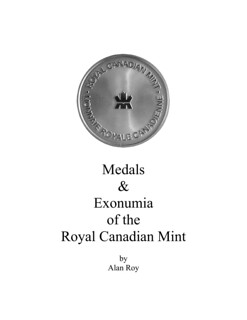 "I am participating in the Royal Canadian Numismatic Association's "Book Fair" at the Ottawa convention. I, or my wife Diane, will man a table to sell my new book, Medals and Exonumia of the Royal Canadian Mint, and field questions about it. The book fair will take place on July 22nd and 23rd during bourse hours. Howard Engel (of Richard Stockley Numismatic Books) will also have a few copies to sell.
"I am participating in the Royal Canadian Numismatic Association's "Book Fair" at the Ottawa convention. I, or my wife Diane, will man a table to sell my new book, Medals and Exonumia of the Royal Canadian Mint, and field questions about it. The book fair will take place on July 22nd and 23rd during bourse hours. Howard Engel (of Richard Stockley Numismatic Books) will also have a few copies to sell.
"In other news, I have finally sent the text in for printing, and sorry to say, the printing cost is higher than originally quoted by the printer. Consequently, the selling price will be higher than I thought. I will be selling copies for $18.95 CAD. Sorry for any problems this may cause."
To read the earlier E-Sylum article, see:
NEW BOOK: MEDALS OF THE ROYAL CANADIAN MINT
(https://www.coinbooks.org/v25/esylum_v25n26a02.html)
More on the Case of the Missing Pages
Peter Preston-Morley writes:
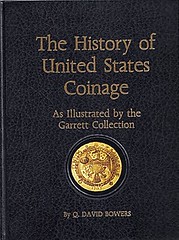 "I was interested to read Chriss Hoffman's note about Dave Bowers' Garrett catalogue, about which I echo his remarks on its usefulness, quite apart from being an excellent read!
"I was interested to read Chriss Hoffman's note about Dave Bowers' Garrett catalogue, about which I echo his remarks on its usefulness, quite apart from being an excellent read!
"I couldn't obtain a copy of the first printing in 1979, but my copy, bought in 1980, is of the second printing and is complete, for what that is worth. I suspect that the book was printed in sections of 24 pages (books are often printed in sections of multiples of 8 pages, depending on the total pagination) and somehow a section was omitted at the binding stage."
To read the earlier E-Sylum article, see:
NOTES FROM E-SYLUM READERS: JUNE 26, 2022 : The Case of the Missing Pages
(https://www.coinbooks.org/v25/esylum_v25n26a09.html)
Bank Note Cigar Label
Phil Iversen writes:
"In last week's issue of The E-Sylum there is a neat photo of a Bank Note tin. It is strikingly similar in appearance to a cigar label and very much popular with currency collectors and/or cigar aficionados."
Thanks. The cigar label is at the top, with the tin shown below. I'm sure there are many more examples out there. Feel free to share. -Editor
To read the earlier E-Sylum article, see:
NUMISMATIC NUGGETS: JUNE 26, 2022 : Bank Note Cigar Tin
(https://www.coinbooks.org/v25/esylum_v25n26a22.html)
More Mint Mini Bags
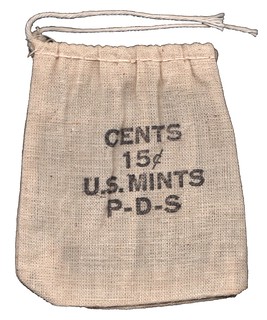 Ed Herman writes:
Ed Herman writes:
"I have examples of the Mint Mini bags shown containing 15 cents (5 from each mint) from 1971, 1972 and 1973. I also have 3 similar bags containing 20 cents (all from one mint) dated 1971 from each of the three mints."
Nice set! Illustrated is one of Dave Lange's bags. -Editor
1938 Nickel Mint Bags
"Dave Lange's submission about US Mint canvas bags in the June 26 E-Sylum newsletter reminded me that I had some nickel bags that were less than the normal size. Regular nickel bags have $200, but these photos show $50 bags from the Philadelphia and Denver Mint dated 1938, and a letter of their provenance. The two nickels in flips laying on the bags were in the bags when I purchased them from a collector some years ago, one P and D mint, now nicely toned.
"The personal letter, from Albert Johnson, who is listed on the letterhead as auditor of the First National Bank and Trust Company, Evanston, Illinois, was addressed to a John and Iris Black of New Britain, Connecticut and dated December 8, 1938. The letter states Another bag from Denver mint with new nickel from each is enclosed. Denver nickel has a D at right of building. Phila. mint uses no marks on the coins.
The remainder of the letter doesn't have any other coin related information.
"Despite that confusing statement, it appears that $50 bags were available in 1938, at least from the Philadelphia and Denver mints. I do know that $200 bags were in use – the late Ed Fleischman (of Coin World and later the ANA Certification Service) once showed me a $200 Denver Mint nickel bag commenting I wonder if this bag was for Buffalo or Jefferson nickels. Denver made both types in 1938, either could have been in the bag.
"Was the US Mint making sample bags of the new Jefferson nickel available in 1938 to banks for distribution to customers? Perhaps the demand for the new nickels was such that the mints were limiting the distribution. And did San Francisco have $50 bags also?
"And speaking of mint bags, what is the oldest dated mint bag? A reader contest perhaps?"
Great idea! Anyone have or know of a bag dated earlier than 1938? All those 19th century silver dollar bags that came out in the 1960s didn't have dates and mints printed on them or people wouldn't have had to open or cut a hole in them to see the contents. -Editor
To read the earlier E-Sylum article, see:
U. S. MINT CANVAS BAGS
(https://www.coinbooks.org/v25/esylum_v25n26a11.html)
Don Kelly's "Maytag Days"
Clifford Mishler writes:
"Reading the coverage provided in last week's E-Sylum issue reporting the passing of Don Kelly, drew my thoughts back to the two or three years he served as the curator/docent at the Higgins Museum. A detail focused person, he invariably evidenced a light-hearted attitude towards those details. When presenting attendance results to the board . . . he referred to those days when there were no visitors as a . . . Maytag Day
. . . on which he could devote his total focus on whatever new information he might dig out of the National Bank Note records at his hand there. Don was a truly wonderful guy that it was always a delight to spend some time with."
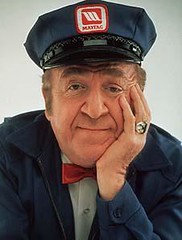
For our younger readers, the archetypal Maytag Repairman was played for years by actor Jesse White - perpetually bored with nothing to do, since those darn dependable Maytag appliances never broke down. That was the story anyway. -Editor
To read the earlier E-Sylum article, see:
DONALD CLYDE KELLY (1933-2022)
(https://www.coinbooks.org/v25/esylum_v25n26a04.html)
Colorized Paper Money Images
Wayne Pearson writes:
"I found some really cool looking colorized paper money. I copied two different $100 bills as they are on the site, and I made each in a lightened version. They have other denominations as well. They look great hanging up."
These are stock photos made for sale. -Editor
To read the earlier E-Sylum article, see:
Fragment of new colorized 100 dollar banknote
(https://www.dreamstime.com/fragment-new-colorized-dollar-banknote-design-purpose-image228382400)
PHOTOS: DULUTH COIN FIND, HOUSTON ANA DEALERS
David Lange submitted this note on a couple numismatic photographs he recently purchased. Thanks! -Editor
The first is from Acme Newspictures, Inc. and is dated June 27, 1937. It shows two Duluth, Minnesota boys who uncovered a cache of USA gold coins. They are Donald Haglund, 11 (left) and Teddy Tedor, 7. They found a tin containing $1,050 face value comprised of half eagles, eagles and double eagles. The burial was estimated at around 1914, which evidently was the latest date found.
The second photo was taken by Roger Powers of The Houston Post and is dated August 23, 1978. It features Harold Kritzman (left) of Newington, Connecticut showing a coin to Karl Herzog of Odessa, Texas. Given the date, it was almost certainly taken during that year's ANA Convention in Houston. I recognize both of these dealers' names, though I don't believe I ever met either.
It should be noted that while I own these prints the copyrights still may be in effect. This is typical of most of the photos I've acquired over the years, but that doesn't prevent enjoying them.
STACK'S BOWERS OPENS BOSTON GALLERY
Stack's Bowers Galleries is expanding. Here's the press release for their new Boston location, and their new ad this week highlights their recently-created Virginia Beach office. -Editor
Stack's Bowers Galleries is proud to announce the upcoming opening of a new downtown rare coin gallery in historic Boston, Massachusetts. Located at 84 State Street in the heart of Boston's financial district, the gallery will be just steps from the city's two most iconic tourist attractions: historic Faneuil Hall and the irresistible Quincy Market. The showroom is just a 15 minute walk from Boston's South Station, granting convenient access to collectors across the entire northeast. Renovations are under way and the firm hopes to open the 84 State Street storefront to the community in early fall 2022. With the opening of this new location, Stack's Bowers Galleries is thrilled to unite New England collectors with the country's most accomplished rare coin firm.
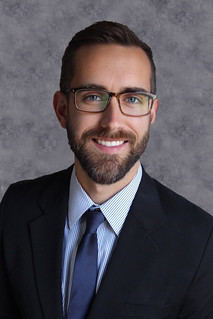 Staffed by top numismatic professionals, as collectors have come to expect from Stack's Bowers Galleries, this
office will be led by Kevin Vinton, one of the nation's top experts in United States coins. Kevin was born and raised
in New England, developing an interest in numismatics at an early age. Upon graduating from Wheaton College (IL)
in 2009, Kevin went to work for Sam Sloat Coins as numismatist and manager. In 2013, he founded Inde Et Lib,
Numismatists, becoming a highly respected expert and market maker in U.S. colonials and early federal copper,
handling countless rarities and bringing several important collections to market. Kevin is a life member of the
American Numismatic Association, Early American Coppers, the Colonial Coin Collectors Club, and many other
organizations.
Staffed by top numismatic professionals, as collectors have come to expect from Stack's Bowers Galleries, this
office will be led by Kevin Vinton, one of the nation's top experts in United States coins. Kevin was born and raised
in New England, developing an interest in numismatics at an early age. Upon graduating from Wheaton College (IL)
in 2009, Kevin went to work for Sam Sloat Coins as numismatist and manager. In 2013, he founded Inde Et Lib,
Numismatists, becoming a highly respected expert and market maker in U.S. colonials and early federal copper,
handling countless rarities and bringing several important collections to market. Kevin is a life member of the
American Numismatic Association, Early American Coppers, the Colonial Coin Collectors Club, and many other
organizations.
This Boston location will offer the firm's entire range of numismatic services. Collectors will be able to sell their coins and paper money for top market value and browse an extensive selection of items available for direct purchase. The gallery will also serve as an important resource for gold and silver bullion trading, appraisals, and auction expertise.
The firm is eager to grow their team at the new gallery and is seeking to hire experienced numismatic specialists, along with shipping and administrative staff. Interested candidates are invited to send resumes and cover letters to Mschimel@stacksbowers.com.
We are very excited to enter the Boston market, particularly in such a great location in the most popular downtown
area in Boston,
said Stack's Bowers Galleries President Brian Kendrella. This city and its collectors have been a
mainstay to the history and success of our business, and we are proud to have a new home in Boston. I'd also like to
announce the creation of limited edition, Q. David Bowers signed American Silver Eagles graded by PCGS to
commemorate the opening of our New York (2020), Philadelphia (2021) and Boston (2022) galleries. There are
only 500 made for each location and they will be offered in our Precious Metal Auctions beginning in July.
VOCABULARY TERM: KEY TAG MEDAL
Here's another entry from Dick Johnson's Encyclopedia of Coin and Medal Terminology. -Editor
Key Tag Medal. The utilization of a medal to put on a ring of keys; they are always looped or holed. Because of their intense wear, key tag medals are struck in hard alloys; nickel-silver and copper nickel are well suited for this purpose. A large volume of any medal manufacturer's production is concerned with key tag medals so popular are they. Often they are made as a reduction of a larger medal as one of the more utilitarian purposes of medallic art. Sometimes these bear a serial number stamped on the back; they are issued with a card bearing the same number. When mailed back to the issuer they form a registry to identify the owner; when the keys are lost they can be returned to the owner through this registry.
Medal makers also have stock design key tag medals available to any one who wishes to order such. The Paris Mint, for example, has two dozen special designs available as key tags (in French, porte-clefs). These include designs from historical motifs, mythology, art scenes, zodiac medals, and of course, the ubiquitous Saint Christopher medal for travelers.
To read the complete entry on the Newman Numismatic Portal, see:
Key Tag Medal
(https://nnp.wustl.edu/library/dictionarydetail/516192)
JACK H. ROBINSON (1941-2021)
American Numismatic Biographies author Pete Smith submitted this article on Large Cent specialist Jack Robinson. Thanks! -Editor
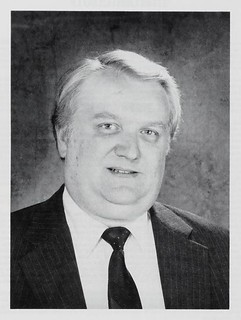 The July issue of The Numismatist notes the death of Jack Robinson. There was also a notice in
Penny-Wise last year but his death was not noted in The E-Sylum. Here are a few of my
comments and recollections.
The July issue of The Numismatist notes the death of Jack Robinson. There was also a notice in
Penny-Wise last year but his death was not noted in The E-Sylum. Here are a few of my
comments and recollections.
His name may have been John Harold Robinson, born in San Diego on December 11, 1941. He was the son of a naval officer and moved frequently during his childhood. Jack graduated from Benjamin Franklin University with a B.C.S. degree and became a Certified Public Accountant. He applied his interest in computers to develop a successful business providing accounting software to clients around the world.
Jack was married to Linda and had two daughters. A second marriage was to Hue To Robinson.
Jack joined Early American Coppers (EAC) as member 1308 in 1981. I met him when he joined a group of us for dinner at the EAC convention in Cincinnati in 1982. He made an immediate impression as a strong buyer at the 1982 EAC sale. By that fall he had become a player in the auction market and Denis Loring referred to him as Mr. X in his report of an October sale at Stack's.
At the EAC convention in 1983, Jack acquired Denis Loring's set of the cents of 1794. Mr. X became known as a major force in the market.
I had an intention to compile a price guide for early large cents and submitted my first article on
Large Cent Auction Results
in 1982. Jack had similar goals. In the September 15, 1983, issue
of Penny-Wise, he announced publication of Copper Quotes by Robinson. I deferred to Jack and
let him produce the price guides. That was a wise decision.
Jack joined Richard E. McLaughlin to conduct sales under the company name of McLaughlin and Robinson. Their first sale was in May of 1983. The company faded after Jack sold his collection in 1989.
Jack joined Del Bland and Denis Loring to form the EAC Grading Committee to offer opinions on the grades of early copper coins. This had the casual approval of the club but had no official status.
Doctor Sheldon created the 70-point grading system, the condition census and a system for establishing the value of cents. This reflected the market for the generation of collectors that operated prior to publication of the book. The system became obsolete shortly after publication.
Robinson's CQR with frequent updates educated collectors on the importance of condition and influenced the generation of collectors that followed his publication. It also allowed dealers to apply CQR prices to coins that were optimistically graded. CQR was only intended to apply to coins that were graded according to conservative EAC standards.
My friend and mentor, Dick Punchard, had a nice set of the cents of 1793, but never got a Sheldon-7. None had appeared at auction in about twenty years. Then three came to auction in the Floyd Starr sale of June 13, 1984. Jack acquired the F-15 example from the Starr sale. This gave Jack a duplicate that I was able to acquire in 1986.
The key to completing a collection of early cents is the Sheldon-79 variety. When one comes up for sale, the community probably has an idea who is likely to be the next owner. Jack's turn came at the 1986 sale of the Robinson S. Brown collection. Jack became the seventh known collector to form a complete collection of Sheldon varieties. In turn, with the sale of his collection, the coin was passed to G. Lee Kuntz.
Jack was owner of Nutech providing commercial laundry services to large hotels. They used a computerized system to track workflow and manage inventory. With his early cent collection completed, he offered his collection for sale to raise finds to expand the laundry business. This was one of the big event sales conducted by Superior in the 1980's with pre-sale parties and excited participation from EAC members.
I have given talks with the topic of I Collect Weird Stuff.
An example is a lot I acquired at the
Robinson sale. The 1794 Sheldon-33 is known as the wheel-spoke
variety. Lot 54 was an early
die state S-33 that does not show the wheel spokes. That's the one I bought at the sale.
The last time I saw Jack was at the 2012 EAC/JRCS convention in Buffalo. I had dinner one evening with Jack and his wife. They talked about Jack's current business venture that involved sterilizing water in ships ballast tanks with ozone. There is a saying that invention is ten percent inspiration and ninety percent perspiration. The impression I got from Jack is that ninety percent was dealing with government regulation.
Jack H. Robinson died at home on February 18, 2021. I could not find a published obituary on the web. His date of death was not in Penny-Wise or The Numismatist. I got his date of death in an email exchange with his widow.
The hobby owes a great deal to Pete for his longstanding efforts to locate, compile and publish all manner of important numismatic information, from coin auction appearances and ownership chains, to collector biographies like this. Many thanks for submitting these for publication here in The E-Sylum. -Editor
DON TAXAY'S GREAT TRADE
Douglas Ward submitted this article about "The Great Trade" orchestrated with the Chase Manhattan Bank Museum by Lester Merkin and Don Taxay. Thanks! -Editor
Pete Smith's biography of Donald Paul Taxay reminded me of an enigmatic connection and added some interesting knowledge. In his article he relates that Don Taxay was somewhat nomadic in his life and numismatic endeavors. But among his numerous acquaintances was a fellow musician and numismatist, Lester Merkin of New York City. They were likely introduced by John J. Ford or Walter Breen, with whom Taxay had worked at the New Netherlands Coin Company in the early 1960s. Ford and Taxay would author a number of articles on counterfeit coins for The Numismatist and Coin World. And in 1963 he would form an authentication company with Breen. Don Taxay and Lester Merkin likely became good friends with similar backgrounds and interests. Both had begun their careers as dealers at about the same time in the late 1950s.
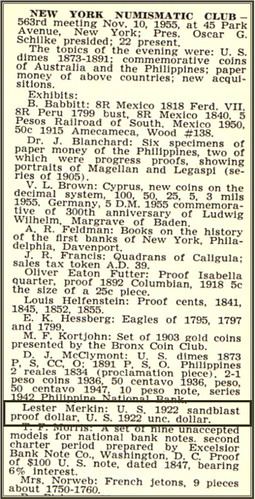 However, Lester Merkin had started
out as a collector of some renown for having
re-discovered the 1922 high relief matte proof
Peace dollar. Later called the
However, Lester Merkin had started
out as a collector of some renown for having
re-discovered the 1922 high relief matte proof
Peace dollar. Later called the Discovery Coin,
he had obtained it as a pattern from a west
coast dealer in 1954. Merkin took his new
Discovery Coin to a meeting of the New York
Numismatic Club (NYNC) in November of
1955. It was his first reported exhibit in front
of the many numismatic heavy-weights
usually in attendance. His confidence was due
to the realization he had acquired a coin
variety many professional [numismatists]
were not acquainted with,
as Q. David Bowers
would later remark.
Even so, it received only
minor billing; being described as a U. S. 1922
sandblast proof dollar.
He had also brought
along a U. S. 1922 unc. dollar,
for comparison and as ‘proof' of it's uniqueness in strike,
finish and relief. It seems odd that NYNC Secretary E. K. Hessberg did not apply the obvious
term Peace dollar
to either description. The usually concise secretary may have been
unsettled by the neophyte's brazen attempt to upstage their dignified proceedings, or
perhaps rightly questioned its authenticity.
Such questioning would have also lead to Walter Breen, who had become an expert
on the subject. When Donald L. Rhodes acquired the third known specimen in early 1958,
he sent it to Breen for authentication against the Zerbe and Discovery Coins. All three
would be described in Breen's 1961 article The 1922 Type of 1921 Peace Dollar.
Merkin would likely learn of a second specimen's existence from Vernon L. Brown who was also present at the pivotal 1955 meeting. He was a NYNC regular and long time member of the prestigious club. Brown was also curator of the Chase Manhattan Bank Moneys of the World Museum, a position he assumed after Farran Zerbe's retirement in 1939. He would retire in 1964 and Don Taxay would become the museum's new curator, likely on the recommendations of John J. Ford and Walter Breen. The Museum's specimen was attributed to Zerbe's original 1922 acquisition from the Philadelphia Mint. Ironically, also present at the meeting was Mrs. R. Henry Norweb, who was apparently unaware she also owned a specimen within the vast Norweb holdings!
In 1965 the Zerbe Specimen lay peacefully in the Chase Manhattan Bank, quietly
awaiting its eventual fate as a relic in either the Smithsonian or American Numismatic
Society collections. Twelve years later the Chase Museum would close and its massive
collection dispersed to the more renowned and eternal archives. Then clandestinely on
June 30th Lester Merkin and Don Taxay orchestrated what could be called The Great
Trade.
Merkin's prize was the Zerbe 1922 High Relief Matte Proof Peace Dollar, only the
third known at that time. And he would then possess all three. Former curator Vernon
Brown would likely not have been receptive to such an exchange during his 25 years of
oversight. Such loose trading was not a generally accepted practice for a museum curator –
not to mention the coin was his mentor's original acquisition. Records show a trade was
also made with John J. Ford about the same time, although it's unknown what he acquired.
A year later, Taxay did not relate the trade in his 1966 book The U. S. Mint and Coinage.
Although it contains a chapter on the Peace Dollar and he had the knowledge, no
accounting of known 1922 proof specimens was included.
The coins received in this trade were recorded in the Chase Money Collection inventory, released in the early 1970's. The most valuable of these was a 1792 white metal 25 cent trial strike, Judd-13, by Joseph Wright, costing $4,725 and appraised at $12,500. A recent sale of one discovered in the New York Historical Society brought $1,260,000. There were 15 pattern pieces listed with a combined declared cost of $12,480 and an appraised value of $29,855. This fabulous amount attests to Merkin's 1922 Proof Peace Dollar fever, since $3,100 had been the highest price reportedly paid for a specimen up to that time.4 He was especially proud of his Discovery Coin and held it until his death in 1992. On Taxay's departure as curator in 1966, Merkin would recommend another good friend, numismatist and fellow orchestra musician, Gene Hessler, for the position. Whether termed The Great Trade, The Great Raid or The Great Escape, it's another enigmatic chapter in Peace Dollar and numismatic lore.
1792 25 cent pattern Judd-13. Provenance: American Numismatic Society, 1977; Taxay for the Chase Manhattan Bank Money Museum, June 30, 1965; Merkin from Century-Paramount, April 30-May 1, 1965, lot 53. United States Mint, Philadelphia. Joseph Wright designed; very likely a pattern intended as a quarter dollar. Two specimens are known in bronze (SI-NMAH 1991.0357.0121) and four in white metal. A specimen in white metal from the New York Historical Society recently sold at auction for $1,260,000 (Heritage, April 22-25, 2021, lot 4960). Image courtesy of the American Numismatic Society, 1980.66.2.
REFERENCES:
New York Numismatic Club meeting minutes, 10 November 1955, The Numismatist, Vol. 69, No. 1, p. 61.
Obituaries, Lester Merkin-LM 341
, by Q. David Bowers, The Numismatist, Vol. 106, No.
10, p. 1463.
The U.S. Mint and Coinage
by Don Taxay, Arco Publishing Company Inc.,1966, p. 354 –
359.
Californa State Numismatic Association Rare Coins Unrestricted Auction Sale catalog,
Donald L. Rhodes, April 9 – 12, 1959, page 22.
The 1922 Type of 1921 Peace Dollar by Walter Breen, The Numismatic Scrapbook Magazine, Vol. XXVII, No. 7, July, 1961, p. 1721-1729.
Chase Manhattan US Patterns, Commemoratives, Errors and Coins,
by Chase Manhattan
Bank, approximately 1970, Newman Numismatic Portal Collection, Internet Archive;
https://archive.org/details/epnbox6-chasemanhattanuspattcom
To read the earlier E-Sylum article, see:
DONALD PAUL TAXAY (1933-????)
(https://www.coinbooks.org/v25/esylum_v25n25a16.html)
PRATT GALLERY SHOWCASES MONEY AND MEDALS
John Mellman and Arthur Shippee passed along this Yale News article about the new Bela Lyon Pratt Gallery of Numismatics that we discussed earlier. Thanks! -Editor
The Circus Maximus, the stadium where Romans gathered by the tens of thousands to watch chariot races and other spectacles, had lap counters shaped like dolphins. Those dolphins are visible on the sestertius of Trajan, an ancient coin celebrating the Emperor Trajan's restoration of the grand arena in A.D. 103.
One of the finest known examples of the sestertius is on view in the new Bela Lyon Pratt Gallery of Numismatics at the Yale University Art Gallery.
Named for Bela Lyon Pratt, a noted Yale-educated sculptor and medalist, the first-floor space is specially designed to showcase numismatics — coins, tokens, medals, and paper money. Its 16 display cases contain about 260 of the museum's smallest objects, including the remarkable sestertius of Trajan.
One side of the ancient coin features a profile bust of Trajan, who ruled the Roman Empire from A.D. 98 to 117. On the reverse, the Circus Maximus, which no longer exists, is rendered in precise detail.
The new gallery exhibit occupies a small room adjacent to the museum's central elevator lobby and near the study room. The display cases are brightly lit but the room is otherwise dark.
The goal was to create an intimate space,
Hellings said. We leaned into the close quarters here and played with the lighting to produce that intimate feeling where visitors can feel comfortable pondering the objects for a little while.
The label text is concise — usually just a sentence explaining an object's significance. QR codes below each case allow visitors to access additional information from the museum's website about the items on view.
The exhibit moves from antiquity to North America during the 16th to 20th centuries with examples of the New England shilling, the oak tree three pence, the gold $20 double eagle, and other American objects.
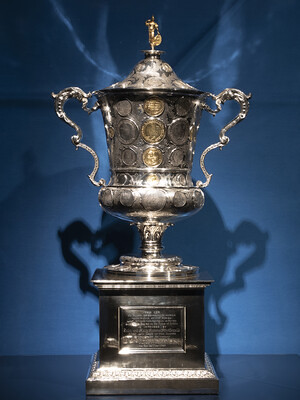 Not all the objects on view fit into a wallet or coin purse. The silver Naseby Cup, created in 1839 to commemorate the Battle of Naseby during the English Civil War, gleams from its display case. Seventy-two coins, counters, and medals from the period of the English Civil War are integrated into the cup, which was commissioned by John and Mary Frances Fitzgerald, the Lord and Lady of Naseby Manor.
Not all the objects on view fit into a wallet or coin purse. The silver Naseby Cup, created in 1839 to commemorate the Battle of Naseby during the English Civil War, gleams from its display case. Seventy-two coins, counters, and medals from the period of the English Civil War are integrated into the cup, which was commissioned by John and Mary Frances Fitzgerald, the Lord and Lady of Naseby Manor.
I think it's one of the most fascinating objects on display,
Hellings, said. It is an ostentatious and spectacular display of wealth from an English manor combined with unique and rare coins.
There are cases devoted to the production of coins and their use in international trade and commerce from the 8th century through the 19th century. A case devoted to medals includes an 1804 medal commemorating Napoleon's conquest of upper Egypt. The design borrows crocodile imagery from a coin struck in 28 to 27 B.C. to celebrate Octavian's successful Egyptian campaign, an event that set the stage for the ambitious former triumvir to become Caesar Augustus, the first Roman emperor. That coin, the denarius of Octavian, is included in the case on the Roman World.
The new gallery offers visitors a glimpse of numismatics related to Yale. The Nobel Prize Medal for Literature presented in 1936 to playwright Eugene O'Neill, whose archives are at the Beinecke Rare Book and Manuscript Library, is displayed in a singularly dedicated display case.
To read the complete article, see:
Not your ordinary pocket change: new gallery showcases money and medals
(https://news.yale.edu/2022/06/14/not-your-ordinary-pocket-change-new-gallery-showcases-money-and-medals)
To read the earlier E-Sylum article, see:
YALE'S BELA LYON PRATT GALLERY OF NUMISMATICS
(https://www.coinbooks.org/v25/esylum_v25n22a11.html)
RIJKSMUSEUM LIBRARY NUMISMATIC EXHIBIT
Patrick Ian Perez published a Greysheet article about his recent visit to a numismatic exhibit in Amsterdam. With permission, we're republishing it here. Thanks! -Editor
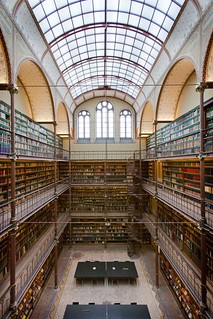 Recently I found myself in the Netherlands in the wonderful city of Amsterdam. I had the opportunity to visit the Rijksmuseum, the national Dutch museum. It holds a very fine collection of paintings and other artifacts and, of course, the rooms with the very large Rembrandts, van de Veldes and the Vermeers get the most attention. The most intriguing room to me, however, was behind a set of very heavy glass doors with the words
Recently I found myself in the Netherlands in the wonderful city of Amsterdam. I had the opportunity to visit the Rijksmuseum, the national Dutch museum. It holds a very fine collection of paintings and other artifacts and, of course, the rooms with the very large Rembrandts, van de Veldes and the Vermeers get the most attention. The most intriguing room to me, however, was behind a set of very heavy glass doors with the words Silence
imprinted upon them. The room was the museum library, and the entrance is actually a mezzanine overlooking four floors of bookshelves housing thousands of archival volumes. Down below I found a normal library workspace where one could peer at researchers toiling away. Visitors to this small and crowded space were forced to walk around a rather large display case in order to get a proper view of the library and the requisite photo op. Much to my delight, this display was full of coins and medals. So, while most everyone else was fixated on the dramatic library walls—and rightly so—I spent my time viewing the numismatic items.
There were many historic medals struck in gold and silver relating to the Dutch Empire, exploration, and trade. The many coins on display included Dutch provincial coinage, some of which circulated in Colonial America, along with many rare Dutch Colonial pieces of early Brazil and coins struck under the authority of the Dutch East India company. There were also early Chinese and other Southeast Asian coinage.
Amidst all of these was an American 1794 Flowing Hair dollar. Nicely toned with midnight blue highlights, the coin has evidence of polishing from long ago but still has Very Fine details. Seeing this rare piece in a European museum got me thinking about the historic nature of the items we deal in and collect.
History is an oft-cited reason why people collect coins and paper money, but what does that mean? Ultimately, it means participating in the preservation of human culture. That may sound hyperbolic because the market commoditizes rare coins quite well, especially things like common-date Morgan dollars and St. Gaudens double eagles, and there is nothing wrong with that. The commercial trading of collectible coins is a business that dates back centuries. But coins are not manufactured widgets and one example does not have to be a rare date or a finest-known piece to be historic. In fact, it was a bit refreshing to see a display of coins in which none were certified and ranged in condition from Very Good to Extra Fine. They were simply there to tell a story, and did that quite well.
In the market such as we have had over the past year and a half it is easy to get concentrate too much on valuations and rising prices and lose touch with the cultural aspects of collecting coins. If you have not done so in a while, take out the favorite part of your collection and enjoy its historic significance, or read something new about numismatics that you have not explored before. There is much comfort in the idea that these pieces have both cultural and monetary value.
To read the complete article, see:
CPG Editor's Message (CPG Market Review July 2022)
(https://www.greysheet.com/news/story/cpg-market-update-cpg-market-review-july-2022)
For more information on the Rijksmuseum Cuypers Library, see:
Cuypers Library
(https://www.rijksmuseum.nl/en/visitor-information/inside-the-rijksmuseum/cuypers-library)
STEPHEN ALBUM RARE COINS AUCTION 43 RESULTS
Here are some results from the recent Stephen Album Rare Coins Auction 43. More strong prices! -Editor
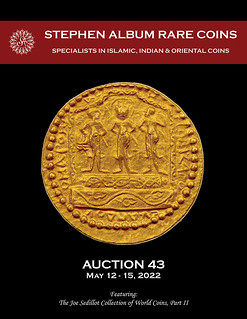 Stephen Album Rare Coins held its Auction 43 on May 12-15, 2022, at its offices in Santa Rosa,
California. The price realized were once again strong, coming in at $2.46 million (including buyer's fees)
with a sell-through rate of 93.8%. Many items went for multiples of their estimates, including some
world-record results. The Joe Sedillot Collection of World Coins, Part II was instrumental in achieving
these results. Additional items from that collection will be featured in the firm's Auction 44 in
September.
Stephen Album Rare Coins held its Auction 43 on May 12-15, 2022, at its offices in Santa Rosa,
California. The price realized were once again strong, coming in at $2.46 million (including buyer's fees)
with a sell-through rate of 93.8%. Many items went for multiples of their estimates, including some
world-record results. The Joe Sedillot Collection of World Coins, Part II was instrumental in achieving
these results. Additional items from that collection will be featured in the firm's Auction 44 in
September.
A selection of highlights follows (prices include buyer's fees):
INDIA: LOT 838: KUSHAN: Huvishka, ca. 155-187 AD, AV dinar (7.96g), G-157.1, BMC-XXVIII/24, NC-XX/17 (same reverse die), ANS Kushan—, diademed and crowned half-length bust left, with flames above right shoulder, holding mace and ankusa (elephant goad), clouds below, ÞAOhAHOÞAO O-OhÞKI KOÞANO // three nimbate figures standing facing on double dais within ornate aedicule, the central figure crowned, the others with their heads turned toward him, tamgha in inner left field, MA-AC-H-NO BIZAGO CKAN?O K-OMAPO, Choice AU, RRR. Estimated at $50,000 to $55,000. Realized $57,000.
CHINA: LOT 704: CHIHLI: Kuang Hsu, 1875-1908, AR 50 cents, Peiyang Arsenal mint, Tientsin, year 24 (1898), Y-64.1, L&M-450A, variety with dragon marked by almond-shaped eyes and hook-like whiskers, an attractive lightly toned example! PCGS graded AU50, RR. Estimated at $2,000 to $3,000. Realized $54,000.
CHINA: LOT 715: Republic, AR 20 cents, year 21 (1932), Y-391, L&M-854, WS-1066, Canton Martyrs Commemorative issue with Yellow Flower Mound Mausoleum (Huanghuagang), double die reverse, a fantastic, toned example and rarely so nice! PCGS graded MS66, ex Joe Sedillot Collection. This is by far the finest graded example by PCGS or NGC as both have graded only a single coin in MS-64 and none higher. Estimated at $3,000 to $5,000. Realized $54,000.
WORLD: LOT 1082: KUWAIT: Abdullah II b. Sabah II Al-Sabah, 1866-1892, AE baiza (5.32g), al-Kuwait, AH1304 (1886/87), KM-1, tughra seal of the Sheikh // mint/date formula, average strike, but boldly clear mint & date, VF, RRR. Sheikh Abdullah ordered the minting of a copper coin, known at that time as the Kuwaiti baiza (paisa) in 1886, due to the lack of Indian copper coins circulating in the local economy. The primitive, crude, hammered coins were locally produced. According to Kuwaiti Islamic coin specialist M. Al-Hoseini, the person overseeing the minting operation was a senior member of the prominent Bodi tribe. Very few coins were produced, with up to 4 possible types with notable distinctions in the text, design, and even planchet thickness. They circulated for several weeks, but the coinage was short lived. Estimated at $2,000 to $4,000. Realized $24,000.
WORLD: LOT 1095: NEPAL: Prithri Narayan, 1768-1775, AV 2 mohars (11.44g), SE1696 (1774), KM-462, a lovely mint state example of this rare type! PCGS graded MS63, RR. Incorrect Krause number on the PCGS holder. A very rare denomination in gold for this ruler and the first we have encountered; nor could we find any auction records of a sale of this double mohar type. Estimated at $3,000 to $5,000. Realized $19,200.
ISLAMIC: LOT 262: ABBASID: al-Muqtadir, 908-932, AV dinar (3.89g), Tabariya, AH311, A-245.2, Bernardi-242Gi, one of the rarest dinar mints for the Abbasids, a Palestinian city on the shores of the Sea of Galilee; bold strike, EF-AU, RRR. Estimated at $12,000 to $15,000. Realized $14,400.
ISLAMIC: LOT 536: GREAT MONGOLS: Chingiz Khan, 1206-1227, AV dinar (3.61g), Samarqand, AH(621), A-1964B, obverse legend khani / chingiz khan / al-'adil al-a'zam / shah jahan- / -gir, with the last two lines meaning "royal conqueror of the world", and that certainly was the goal of Genghis Khan! the reverse has the kalima with the mint name above; struck from the same dies as the example published by A.E. Davidovich (Zeno-265552), which shows the final digit of the date in full, VF-EF, RRRR. The only other specimen listed on CoinArchives is a horribly struck piece from a different set of dies, with the name of Chingiz Khan almost completely illegible, but date 621 is very clear (sold in our Auction 41, Lot 520). Estimated at $4,000 to $5,000. Realized $13,200.
INDIA: LOT 878: COOCH BEHAR: Nripendra Narayan, 1838-1911, AV nazarana mohur, CB354 (1864), KM-180, sri sri / siva char(ana) / kamala mad / huka(asya) in Bengali; pellet within crescent after legend; all within linear quadrate border with floral ornaments at corners; additional floral ornaments in external voids; all within border of alternating dentils and pellets // sri sri / nripendra / nara / yana / san 354 sake in Bengali; floral ornaments flanking sri sri, a lovely toned lustrous nearly mint state example! PCGS graded AU58, RRR. Estimated at $10,000 to $15,000. Realized $13,200.
Company CEO Joseph Lang commented the Chinese market just keeps showing incredible upward
movement, but all areas are doing quite well. Big ticket items as well as lesser material are both doing
well at auction.
The firm's Internet Auction 16 is currently online and takes place on July 11-12, 2022. Pre-bidding has already begun and can be accessed through their website. They are also taking consignments for their next Premier Auction, number 44, which will take place September 15-18, 2022. Please visit www.stevealbum.com for more information.
To read the earlier E-Sylum article, see:
STEPHEN ALBUM RARE COINS AUCTION 43
(https://www.coinbooks.org/v25/esylum_v25n19a20.html)
THE 2022 RCNA AUCTION
The Canadian Numismatic Company is hosting the auction fo the Royal Canadian Numismatic Association convention. Here's the press release. -Editor
The first and second Sessions are highlighted by three attractive coin, medal and banknote collections. The Little Collection
Part V of Canadian decimal coins, The Kennedy Collection
of rare banknotes, the Arizona
Collection of Canadian coins and banknotes. Also featuring in this auction; two elusive silver dollars; a 1947 $1 Pointed w/Dot ICCS Gem Mint State-65 and a 1946 $1 ICCS Superb Gem Mint State-66. An ultra rare 1905 50¢ ICCS Choice Mint State-63, a 1932 50¢ PCGS Superb Gem Mint State-66 with great eye appeal, a set of 1921 50¢ Plaster Cast Obverse & Reverse issues, both graded CCCS PF68. A beautiful 1901 50¢ PCGS Choice Mint State-63, a stunning 1899 9/9 Repunched 9 1¢ PCGS Superb Gem Mint State-66RD. An 1875H 25¢ PCGS Choice About Uncirculated-58, an 1875H 5¢ Small Date ICCS Very Choice Mint State-64, an 1875H 10¢ ICCS Very Choice Mint State-64.
Several early type and rare banknotes from The Kennedy collection
are included in session 2. A splendid 1935 $1000 French text in Choice Very Fine-30, an 1866 $1 Province of Canada in Fine-15, a rare 1870 $2 in Fine-12, a scarce 1878 $2 in Fine-12, a 1935 $100 French text in VF-25, a wonderful selection of the 1935 & 1937 series.
In addition, a superb selection of very scarce Proof and Specimen banknotes and several others including Rare Serial number issues and error notes. Again, The Little
Collection Part V holds a premium selection of carefully chosen decimal coins. Most of them are graded by ICCS and each piece has been carefully selected and is attractive and proper for the grade attributed, some surprises and attractive issues.
The Arizona Collection
offers Several top graded banknotes. The two Jewels of this collection is a Specimen 1925 $500 in Gem Uncirculated condition and a Specimen 1925 $1000 in Choice Uncirculated. Both are excessively rare and desirable. Several other attractive and stunning issues. A good assortment of tokens is listed in session 3.
This fantastic 2022 RCNA Auction sale event should make some spectacular moments and active evenings of auctioning. We expect this to be one of the prestigious numismatic events of 2022 featuring several rarities never offered to the public.
For more information, or to bid, see:
https://auctions.canadiancoinsandpapermoney.com/
2022 RCNA AUCTION SELECTIONS
Here are some lots that caught my eye in the upcoming RCNA auction by the Canadian Numismatic Company. -Editor
Medal; Dominion of Canada Award Medal, ND (c. 1880s). 22kt Gold, 41mm, 57 gr by P. Tasset. Leroux 1460, McLaughlin 484. DOMINION OF CANADA above an allegoric female flying with wings, sounding a trumpet; engraved between the legend and winged female: PRESENTED BY / H.R.H. PRINCESS LOUISE; engraved below: TO / A. Sutherland / First Prize Boot Maker / Kingston.; Rx: Canadian Crest with Sprig of Maple Leaves and Beaver. VF-EF, hairlined surfaces. Very rare. This medal was first offered at the 1876 Centennial Exhibition in Philadephia in gold, silver and bronze by Canadian Commissioners for Canadian competitors only. Ex Max Brail Collection.
A beautiful and interesting medal. -Editor
To read the complete lot description, see:
https://auctions.canadiancoinsandpapermoney.com/auction/205/2022-rcna-auction-major-event/session/379/lot/2
Specimen Set; 1908 Set 1¢ to 50¢ all ICCS Gem SPECIMEN-65 with exception of 5¢ Choice SPECIMEN-64. All silver coins displaying similar deep autumn tones. The Cent is Fully Red with lacqueRD designation. Comes with original box in pristine condition. A superior set!
Nice coins. -Editor
To read the complete lot description, see:
https://auctions.canadiancoinsandpapermoney.com/auction/205/2022-rcna-auction-major-event/session/379/lot/11
Nfld 1917 10¢ PCGS Gem Mint State-65. Vivid fully lustrous gem white example with mild golden hue.
Beautiful condition; a plain yet elegant design. -Editor
To read the complete lot description, see:
https://auctions.canadiancoinsandpapermoney.com/auction/205/2022-rcna-auction-major-event/session/379/lot/66
Distillerie de St. Denis; 1837 1 Ecu #578 - QC-125-12-10b-ii, PMG Choice Very Fine-25. Mounted.
Interesting depiction of a U.S. coin on a Canadian note. -Editor
To read the complete lot description, see:
https://auctions.canadiancoinsandpapermoney.com/auction/205/2022-rcna-auction-major-event/session/380/lot/453
The Canadian Bank of Commerce; 1888 $5 #00000 CH-75-14-02P, FP, Legacy Currency Grading About Uncirculated-53PPQ.
Nice vignette and layout. -Editor
To read the complete lot description, see:
https://auctions.canadiancoinsandpapermoney.com/auction/205/2022-rcna-auction-major-event/session/380/lot/463
The Merchant's Bank of Halifax; 1883 $20 CH-465-20-16S, PMG Choice About Uncirculated-58 Net. Specimen example designated as repaired.
Great colors, and another nice vignette. -Editor
To read the complete lot description, see:
https://auctions.canadiancoinsandpapermoney.com/auction/205/2022-rcna-auction-major-event/session/380/lot/524
MT-7 - Breton 568, 10¢ Washington Green Encased Weir & Larminie Token, A magnificent piece from the unique Canadian series of encased stamp tokens by the famous Weir & Larminie bankers and specie brokers from Montréal. Possibly the nicest around. CCCS AU-50.
A nice example of a rare encased postage stamp (my specialty!), from the only Canadian issuer.
Numismatic bibliophiles and researchers should check out lot 876 - "Marked Impressions, Warren Baker, Montreal, 2006 : A catalogue of the Joseph Foster Collection of 19th Century Canadian Countermarked coins." -Editor
To read the complete lot description, see:
https://auctions.canadiancoinsandpapermoney.com/auction/205/2022-rcna-auction-major-event/session/392/lot/866
ROSA AMERICANA FIXED PRICE LIST #23 SELECTIONS
Here are a few items that caught my eye in Jeff Rock's Rosa Americana Colonial Coins fixed price list #23. To get your copy, contact Jeff at rosaamltd@gmail.com. -Editor
2. Undated (ca. 1652-1674) St. Patrick Farthing. Martin 1b.6-Ca.10, W-11500. Low Rarity-7. Copper. Nothing Below King. Choice Very Fine, a well struck and pleasing example of this VERY RARE variety, rated a Low Rarity-7 in Syd Martin's book on the series. The obverse has been boldly counterstamped IC in individual letter punches, and thus may be traceable to a silversmith, pewter maker, or someone in a similar occupation.
The coin itself is quite nice, the legends full and bold on either side, the design details strong save for St. Patrick's face which is directly opposite the I of the countermark and was slightly weakened by it. There is a bold golden splash at the crown, and the planchet is a pleasing light tan, with surfaces that are mostly hard and very pleasing to the eye.
A very rare variety, we have only been able to locate three auction records, including this exact coin which was in Stack's Bowers November 2019 C4 auction. In that sale the cataloguer noted that
According to Sydney F. Martin in the excellent
reference Saint Patrick Coinage (2018), counterstamps are rarely encountered on St. Patrick
coinage, always on farthings, never on halfpennies. When encountered, these counterstamps are
usually ‘crude initials struck from individual letter punches,' as here. This particular IC
counterstamp is not pictured in the Martin reference, and it is also unlisted in the Brunk
reference, so its meaning and purpose can only be surmised. An intriguing piece, and clearly
worthy of additional study.
For many years I collected U.S. Merchant Counterstamps by the undertype - assembling an interesting type coin collection. I didn't have many counterstamped colonials, and this would have made a fine addition to that group. -Editor
4. 1722 Rosa Americana Penny. Martin 2-A.1, W-1256, the VTILE DVLCI reverse. Rarity-6. ICG graded EF45, an accurate grade in our opinion. This example appeared as Lot 5015 in the Stack's Bowers 2016 C4 sale, where it was ably catalogued as follows:
The Roper collection is rightly famous for the quality of the coins it contained, and the excellent job of cataloguing, one of the indispensable sales in a colonial library – though it was sold at the absolute low point of the coin market so the prices realized list looks more like wishful thinking today! Those coins were quickly absorbed into some of the finest collections, and few have reentered the marketplace. This rare type, the only obverse die to have V's in the legend instead of U's, is always popular – we note that a VF20 sold in the 2012 C4 sale for $3,220. This example, 25 points higher and with a provenance to one of the key collections of the modern era is a bargain at just..........$1,400
Beautiful piece! -Editor
14. 1710-D [Lyon Min] French Colonies 30 Deniers. Vlack-2, W-11710. Rarity-2 About Uncirculated, very nearly in the Choice category. Light rub on the high points of either side, but with a fair amount of luster under the gunmetal gray toning. Boldly struck, with all the legends and design details as crisp as when the coin dropped from the dies. There is a crescent shaped diebreak below the first X of the denomination on the reverse, but no real marks from actual circulation.
This is a rare issue to find in high grades as they were intended to circulate, not sit in collector's cabinets. Struck on new planchets and with new designs, these were soon named mousquetaires due to the resemblance of the cross design on the reverse to the emblem of the royal musketeers. Struck at only two mints, Lyon and Metz, from 1709-1713 only. and in just two denominations of 15 and 30 deniers, this was the first billon issue struck specifically for France's North American colonies. They were over-valued in terms of metal content, only slightly heavier than the Recoined Sols which were valued at only 15 deniers, half the value of the new coin. This was purposely done, to insure that most stayed in North America and other French colonies, since no French merchant would accept them back at that valuation.
Bob Vlack estimates that this coinage stayed in circulation for at least a century, and given the average grade of most survivors today this is not unreasonable; Vlack notes some of the fluctuations in valuation of this coin, which soared to 36 deniers at the height of the Mississippi Bubble speculations in 1720 – at this valuations, much of the original mintage likely returned to France for melting. By the time the Sous Marques billon coinage started in 1738 these earlier 30 deniers had fallen to just 18 deniers, essentially the value of their metal at that point.
Listed in both the Whitman Encyclopedia and the Redbook, this is a French Colonies type that every colonial collection should include! This very pleasing AU specimen is priced well under the Redbook valuation for an average AU at only.........$400
Great example of an important piece of American numismatic history. -Editor
To read the earlier E-Sylum article, see:
ROSA AMERICANA COLONIAL COINS PRICE LIST #23
(https://www.coinbooks.org/v25/esylum_v25n26a16.html)
THE BOOK BAZARRE
NUMISMATIC NUGGETS: JULY 3, 2022
Here's a selection of interesting or unusual items I came across in the marketplace this week. Tell us what you think of some of these. Dick Grinolds, a real Yankee Doodle Dandy, starts us off with an item with a patriotic theme - just in time for the Fourth of July. -Editor
Dick writes:
"Here's a nice enameled U.S. Centennial Seated 25c lapel stud that just came in. I just put it up on eBay along with a group of interesting coin related pictorials featuring Nellis Tayloe Ross, Moritz Wormser, Howard Newcomb, etc."
Nice - thanks. -Editor
To read the complete lot description, see:
3095 Enameled Engraved: CENTENNIAL 1876 (U.S. Flag). 1876 Seated 25c Lapel Stud
(https://www.ebay.com/itm/225054422911)
3264 Wax Seal From Jos. H. Merriam, Seal Engraver And General Letter Cutter 18 Brattle Square, Boston; made for J.R. Simms, Dealer In Newspapers, Books, Stationery &c., Fort Plain, N.Y., C.O.D. $5.00.
The seal has a wood handle and brass plate engraved with the initials JRS slightly intertwined. It is 3 1/2 in length with a 13/16 brass seal. The attached receipt is virtually complete with just a couple of the embossed letters of the recipient's address missing. The important extra is the handwritten $5.00 C.O.D. notation which gives some insight into pricing of the time. Whether the price is just for the seal or included other items (such as an embosser) is not known.
Joseph Merriam of course is the die sinker of the Harvey Lewis sutler tokens and the classic Civil War Good For One Scent
dog pictorial die as well as his own long series of tokens and muled strikes. The fact that this receipt stayed attached to the seal for possibly 150+ years is simply fortuitous.
Great association item - perfect for display. Also from Dick Grinolds' eBay offerings. -Editor
To read the complete lot description, see:
3264 Wax Seal & Receipt: Jos. H. Merriam, Seal Engraver And Letter Cutter Boston
(https://www.ebay.com/itm/394143455065)
Material: silver, probably 800/000, Signature: front with embossed signature 'Salvador Dalí', verso with date and crowned embossed stamp 'Dalí 1978', Depiction: main side with three female nudes, reverse with peace doves and olive branches, inscribed all around with the word 'peace' in various languages, Diameter: 6 cm, Condition: good
Many fine artists over the centuries have dabbled in or been commission to make medals. From Auktionshaus Schwab in Mannheim, Germany. -Editor
To read the complete lot description, see:
Lot 533074: Salvador Dalí (1904-1989), 'Israel Friedensmedaille' / 'Israel peace medal', 1978
(https://www.invaluable.com/auction-lot/Salvador-Dali-1904-1989-,-Israel-Friedensmedail-533074-c-7CF40DAAC5)
Boone Iowa SILVER Masonic Chapter Penny Token, very nice toning. Tuscan Chapter No. 31 R.A.M. Chartered October 17 1867 One Penny with Masonic images on reverse.
A nicely toned Masonic chapter penny in silver. From the eBay offerings of Steve Hayden. -Editor
To read the complete lot description, see:
Boone Iowa SILVER Masonic Chapter Penny Token Tuscan Chapter
(https://www.ebay.com/itm/204004671419)
1860 $5 Con Exchange Bank from Desota, Nebraska. VG. Scarce note.
A well-circulated note! The typo in the description is what first caught my eye - "Con Exchange" vs "Corn Exchange". Fascinating connection to the agricultural past. A corn exchange is a building where merchants traded grains. The Corn Exchange Bank of New York merged with Chemical Bank in 1954, taking the name Chemical Corn Exchange Bank and ultimately merging into Chase Manhattan and later becoming JPMorgan Chase. -Editor
To read the complete lot description, see:
1860 $5 Con Exchange Bank from Desota, Nebraska.
(https://us.bidspirit.com/ui/lotPage/source/search/auction/24769/lot/97344/1860-5-Con-Exchange-Bank-from?lang=en)
For more information, see:
https://en.wikipedia.org/wiki/Corn_exchange
https://en.wikipedia.org/wiki/Corn_Exchange_Bank
1793 English MONEY England Numismatics COINS Medals Rome Illustrated Economics Stephen Martin Leake was an 18th-century English numismatist known for his studies in English finance. One of his best books was An Historical Account of English Money a treatise on coins from the Roman conquest in Britain to the reign of King James I and merger of Scotland and England. Note the impressive, full-page engravings of coins and medals. Item number: #20011 Price: $599
LEAKE, Stephen An historical account of English money from the conquest to the present time London : Printed for R. Faulder, 1793. Details: Collation: Complete with all pages o viii, 428, [3]-8, [20] o 14 engraved plates, plus engraved portrait frontispiece Provenance: Armorial Bookplate / Handwritten John Martin Leake, 1811 o John Martin Leake (1739-1836) was the son of numismatist and author Stephen Leake, as well as Chester Herald and Treasury Comptroller of Army. Motto: PARI ANIMO Language: English Binding: Leather; tight and secure Size: ~8.5in X 5.5in (21.5cm x 13.5cm)
Looks like a nice item for the numismatic bibliophile. -Editor
To read the complete lot description, see:
An historical account of English money from the conquest to the present time
(https://www.abebooks.com/servlet/BookDetailsPL?bi=31240125199)
THREE EID MAR COINS IN CHICAGO
Three of the popular EID MAR coins (one in gold and two in silver) currently reside in the Chicago area. Here's a local NBC affiliate's interview with dealer Aaron Berk. -Editor
Three of the rarest coins in the world are now in the city of Chicago, and the dealer that helped make it happen is describing just how historic the occasion is.
Rare coin dealer Aaron Berk helped acquire one of the coins for a collector and has two others, and all were issued in 44 BCE after the assassination of Roman emperor Julius Caesar.
The coins don't depict Caesar, but instead show a portrait of Brutus, who was one of the senators that stabbed Caesar to death. His visage occupies one side of the coin, while two daggers adorn the other side.
The gold coin, which recently sold for more than $2 million to a private buyer, is one of only three of the coins remaining in the world.
It probably was worn in ancient times, and it was probably a supporter of Brutus who actually issued the coin,
Berk said. The coin was issued after the assassination of Julius Caesar in 44 BCE.
The coin also has a small hole in its top, which likely was used to put a chain through so that the piece of currency could be worn as a necklace.
What's really interesting about this coin is one of the reasons Julius Caesar was assassinated is he was trying to make himself into a dictator and he put his image on coins, which was a big no-no back then, and so, here, Brutus, who was one of the assassinators turns around and puts his own portrait on the coin,
he said.
While there are only three gold coins with the image on them, there are believed to be approximately 80 such coins that were minted in silver, and Berk happens to have two of those in his collection too, meaning that three incredibly rare coins are in the same city for perhaps the first time in history.
The fact we have two silver and a gold together in Chicago at the same time is probably the first time in the history of numismatics (the study of currency),
he said. This is bragging rights.
To read the complete article, see:
Chicago Has ‘Bragging Rights' Thanks to Rare Coins Commemorating Caesar Assassination
(https://www.nbcchicago.com/news/local/chicago-has-bragging-rights-thanks-to-rare-coins-commemorating-caesar-assassination/2867415/)
ROMAN GOLD COIN HOARD FOUND NEAR NORWICH
David Pickup passed along this BBC articles about a coin find near Norwich. Thanks. -Editor
A hoard of Roman gold coins hidden in the decades before the Roman invasion of Britain has been discovered.
Eleven coins have been found so far, scattered near Norwich in Iceni tribe territory. Their queen Boudica would later rebel against Roman rule.
Numismatist Adrian Marsden said the hoard is "really quite exceptional" and more coins might be unearthed.
The first coins were found by two metal detectorists in 2017 and they have been uncovering more ever since.
Mr Marsden, from the Norfolk Historic Environment Service, said: "In the last two or three years, they've said, 'There won't be any more,' and I've said, 'There will be,' and sure enough they pull another one out.
"Hoards get dispersed by tractors and ploughs or planting, so coins get moved about fields and can travel quite some distances."
They were struck at Lugdunum, now Lyon, in France, between the last years of the 1st Century BC and the first years of the 1st Century AD - a generation before the Roman invasion in AD43.
They are hardly worn and each has a tiny peck mark by the emperor Augustus' head, which Mr Marsden believes was done by Iceni craftsmen to check their quality.
"These are really high purity gold, whereas the Iron Age gold coins circulating at that time is quite debased - they knew good Roman gold when they saw it," he said.
David adds:
"Interestingly, many of the coins have the same cut on right side of the portrait. The person who did it took care not to damage the portrait. Does this mean the same person did it? Is it a test mark to make sure they were not plated silver coins?"
To read the complete article, see:
'Exceptional' Roman gold coin hoard found near Norwich
(https://www.bbc.com/news/uk-england-norfolk-61984020)
THE CURIOUS BRAMHALL LINCOLN TOKEN
In a Stack's Bowers blog article, Dave Bowers wrote about a curious Abraham Lincoln token produced by George Lovett and the Scovill Manufacturing Company for collector William Leggett Bramhall. In it he quotes a passage published in the AJN 155 years ago today. -Editor
I have always enjoyed tokens and medals of all kinds and have collected, studied and written about many different types and varieties. One group that I find fascinating are the numismatic tokens and medalets issued from 1858 through 1860, during a craze for such pieces. While nearly all are scarce today and many are rare, many only cost in the hundreds of dollars, sometimes less.
Produced in this era was one of the most curious tokens ever made. The issuer was William Leggett Bramhall, born in Buffalo, New York, on June 26, 1839, a young numismatist who by 1859 had accumulated what was called the largest collection of American tokens and medals ever formed in an auction held that year. In 1859 he was curator of the collection of the new American Numismatic Society, but resigned when the Society decided to apply for a New York State charter, and the officers had to be of the legal age of 21.
Being of an inventive turn of mind, Bramhall commissioned George Lovett and, separately, the Scovill Manufacturing Company to strike tokens of his designs.
Abraham Lincoln was nominated for the presidency by the Republican Party at a convention held at the Wigwam in Chicago from May 16 to 18, 1860. Soon after learning of this, Bramhall had George H. Lovett create appropriate tokens to sell to collectors and otherwise distribute.
To be suitable for use on a token, a profile-view portrait of Lincoln was needed. Although the candidate had been photographed many times, including by the famous Mathew Brady in February, all were standing, sitting, or other poses than profile.
To get the right image Bramhall contacted a friend, George B. Lincoln (no kin to Abraham) in nearby Brooklyn. George knew Abraham and obligingly wrote to the candidate in Springfield, Illinois to have a special profile photograph taken. Lincoln portraits have been carefully studied. The Face of Lincoln, by James R. Mellon, 1979, illustrates the "Springfield portrait" but does not identify the photographer or mention Bramhall, who commissioned it.
The tokens measured 19.2 mm, the size of a current cent. The inscription, which included THE / HANNIBAL / OF / AMERICA at the center of the reverse, was very controversial.
A letter from Bramhall to the American Journal of Numismatics, July 3, 1867, gave this:
In May 1860, immediately after the nomination of Abraham Lincoln for president, I obtained—through the kind assistance of my friend, George B. Lincoln, of Brooklyn—a profile photograph of his honest face, which was taken at Springfield for my special purpose. I engaged the services of Mr. George H. Lovett, of New York, who immediately commenced engraving the dies for a small medalet, which soon after appeared, and it was the first—and bore the best likeness of Mr. L.—among the very many issued during that long and exciting political contest.
I will describe it, though perhaps imperfectly, as follows
Obverse: A profile bust of Abraham Lincoln, in citizen's dress, facing to the right, and surrounded by a dotted circle; Legend: "Abraham Lincoln. Natus. Feb. 12. 1809".
Reverse: Inscription: "The Hannibal of America • 1860," within a wreath; Legend: "Abra—ham Lin—coln Honest Abe of the West." Edge plain.
Of these, only 7 pieces were struck in silver, 35 each in copper, brass, and tin, and 250 in nickel,—inclusive of specimens retained by Mr. Lovett.
The appropriateness of the inscription used for the reverse, was, at the time of its issue, severely criticized by some. Although there was nothing then foreshadowed in the character of Mr. Lincoln to warrant his comparison to the Carthaginian warrior, it was intended to illustrate his reputed boldness, and his success, in political warfare; and at the same time to inscribe, in conjunction with the two syllables between the hyphens in the legend, the full name of his associate upon the ticket. The hyphens referred to in the legend were designed to exhibit the singular fact that the last syllable of the Christian name and the first of the surname of Mr. Lincoln comprised the surname of his "political lieutenant," Mr. Hamlin. This was the first political medalet struck in nickel of uniform size with the nickel cent.
Before the close of the political contest referred to, there being a demand for a quantity of these medalets, and the reverse die having been injured, that die was altered by substituting for the legend an oval shield hearing on a scroll "WIDEAWAKES"—above and below it, a rose and leaves. Of this new type there were struck but 21 pieces in silver; 35 each in copper, brass, and nickel; and about 1,500 in block tin. The reverse die of this medalet has since been destroyed by myself.
These tokens caused great excitement and interest in their time.
The Wide-Awakes (usually hyphenated) were enthusiastic Lincoln supporters who held parades in the East and Midwest.
William Leggett Bramhall left New York City, enlisted in the Union Army, was wounded and discharged. He relocated to Washington, D.C., where he became prominent as an attorney, as a government official in the office of deputy collector of taxes, Grand Army of the Republic veterans' affairs, real estate, and in other activities. In 1871 William L. Bramhall & Co. was the agent for the Niagara Fire Insurance Company and the Republic Fire Insurance Company, both of New York. His office was 729 Seventh Street N.W.
Bramhall died suddenly of a heart attack in his residence at 2112 O Street in the morning of February 17, 1902.
Interesting fact: To strike the copper-nickel pieces Lovett obtained cent planchets from the Philadelphia Mint!
To read the complete article, see:
Two 1860 Lincoln Tokens in One!
(https://www.stacksbowers.com/News/Pages/Blogs.aspx?ArticleID=two-lincoln-tokens-q-david-bowers)
SIR EDWARD THOMASON'S SCIENTIFIC MEDALS
A great ANS Pocket Change blog article by John Thomassen examines the very interesting and unusual series of Sir Edward Thomason's scientific medals. Here's an excerpt, but be sure to read the complete article online for much more. -Editor
First, a little bit about Sir Edward Thomason. Born in 1769 in Birmingham, England, he was the son of a buckle- and button-maker. His father ran his own manufactory, but despite this (perhaps the elder Thomason knew his son would learn more under the tutelage of another) the younger Thomason was apprenticed at age 16 to the well-known Matthew Boulton at his Soho factory. In 1793, a 24-year-old Edward took over his father's business, and began producing gilt and plated buttons, before moving on to gold- and silver-plated cutlery and flatware, then jewelry and other ornaments.
Before long, Thomason began striking tokens as Matthew Boulton had done years before at his Soho Mint. Because of his apprenticeship under Boulton—and because Boulton had passed in 1809, leaving Thomason's firm in a unique position to dominate this area of the market—Edward ended up striking many thousands of pounds' worth of small change tokens for various firms, most notably Samuel Fereday's ironworks, but also silver coinage for the Douglas Bank on the Isle of Man. These tokens were needed to pay workers their weekly wages, due to the dearth of small change coinage in circulation. And since low-value copper and bronze coinage was not considered real money
in the sense that it was not silver or gold issued by the state, private entities were able to step in to fill this monetary gap without upsetting official authorities. Most of these activities took place between 1807 (two years before Boulton's death) and 1815.
In addition to his prowess as a manufacturer, Thomason was also a fairly prolific inventor who went on to patent a number of improved designs, most notably a carriage step that automatically folded up when the carriage door was closed, in addition to design advancements in the world of sword canes, umbrellas, corkscrews, and hearth brushes. Another one of Thomason's projects was the construction of a facsimile in bronze of the famed Warwick Vase—a massive, ancient Roman marble vase discovered at Hadrian's Villa in Tivoli, Italy that now resides at the Burrell Collection in Glasgow, Scotland, but was previously situated at Warwick Castle in Warwick, England. This feat he had commemorated on a bronze medal in 1820, and again in 1829 on additional medals issued in bronze and white metal compositions.
All of this brings us to the many medallic series that Thomason also produced to augment his business. These include a series commemorating Napoleon's Peninsular Campaign (20 medals), restrikes of Dassier's Sovereigns of England (36 medals), the aforementioned Parthenon Marbles series (36 medals), his scientific series (16 medals), and perhaps most famously, his monumental biblical series, comprised of a whopping 60 medals. These ambitious series were in addition to single medals issued to commemorate individuals and events (Napoleon, Wellington, the Warwick Vase, completion of the Erie Canal, King George IV, etc.) and were popular during their heyday due to the desire by many middle-class men (and certainly some in the upper class as well) to maintain a proper library as a sign of their upbringing, education, and upward mobility. A proper library could contain not only books and literature, but good furniture, tasteful art, curiosities obtained from travels abroad, and of course, a numismatic and medallic cabinet. Such mass-produced series had their detractors at their time (just as there are detractors today who are disdainful of many modern medallic series) but they remained both desirable to own, and profitable for their manufacturers. Most of Thomason's medals were produced between 1806 and 1830.
Unsurprisingly, Thomason's scientific medals generally focused on the areas of science most applicable to him and his business (metallurgy, chemistry) as well as the burgeoning fields of science that were poised to make (or already were making) significant changes in everyday life (steam power, electricity). It isn't entirely clear who Thomason employed to gather the then-current information that made it onto his medals (some are clearly very dated in the year 2022, such as Chimborazo being the highest peak on Earth, and the pseudoscience of phrenology, which many today find particularly comical, especially upon learning that it was taken somewhat seriously in the 19th century) but at least some of this information would have been known and understood by Thomason himself, seeing as it was pertinent to his many lines of business. Likewise, the artists and die sinkers he employed remain in relative obscurity for now, save for some known personnel such as Thomas Halliday.
Thomason received many honors and titles during his lifetime, both for this diplomatic career (which began in 1815) and because he sent precious metal versions of his medallic series to various monarchs and royal families around the globe. In return, he received both knighthoods (including the honorific Sir
upon being knighted by King William IV in 1832) as well as gold medals as tokens of their appreciation. These honors and titles are fully detailed in Thomason's two-volume autobiography Memoirs during Half a Century, and as they are voluminously iterated there, do not need to be reproduced here.
Lastly, it is worth noting that all 16 scientific medals in the American Numismatic Society's collection were purchased as a complete set in 1947 for a recorded sum of $17.05 from Barney Bluestone's 98th auction catalog, held on October 3 and 4, 1947. The auction listing is pictured below for those interested.
To read the complete article, see:
Sir Edward Thomason's Scientific Medals
(https://numismatics.org/pocketchange/thomason/)
$103.5 MILLION NOBEL PRIZE MEDAL SALE
103.5 is not the classic rock radio station you remember from your youth. It's the astonishing dollar amount (in MILLIONS) paid for Russian journalist Dmitry Muratov's 2021 Nobel Peace Prize medal. Here's the Heritage press release with more background information. -Editor
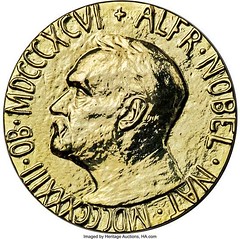 On June 20, Heritage Auctions sold the 2021 Nobel Peace Prize medal awarded to independent Russian journalist and Novaya Gazeta editor-in-chief, Dmitry Muratov, for $103.5 million. That is the highest price, by far, ever paid for a Nobel medal – or a numismatic treasure of any kind.
On June 20, Heritage Auctions sold the 2021 Nobel Peace Prize medal awarded to independent Russian journalist and Novaya Gazeta editor-in-chief, Dmitry Muratov, for $103.5 million. That is the highest price, by far, ever paid for a Nobel medal – or a numismatic treasure of any kind.
The medal sold to an anonymous buyer during a live auction held at the Times Center in Manhattan and broadcast around the world. Proceeds raised from the auction will support UNICEF's humanitarian response to the war in Ukraine and affected regions. Heritage Auctions donated its efforts to bring worldwide attention to Muratov's desire to aid those impacted by the war.
Muratov announced on March 22 that he intended to auction his medal with all proceeds going to support humanitarian relief efforts for Ukrainian child refugees and their families. Muratov's announcement garnered the interest of every major auction house in the world. Within days, he elected to sell the medal through Heritage Auctions, whose efforts were led by Vice President Dustin Johnston.
When I first spoke with Dmitry about the prospect of bringing his Nobel medal to auction to benefit UNICEF, his goal was to shine a light on the suffering of refugees,
says Johnston, who oversees the management of the Currency division including consignment acquisitions. With our aggressive promotion, and global coverage leading up to the auction on World Refugee Day, I absolutely believed Heritage's clients – and the world – would answer Dmitry's challenge. But none of us could have expected the end result, an absolutely breathtaking sum.
Indeed, it was Johnston who accepted the $103.5 million bid over the phone.
The medal opened live bidding at $787,500, then quickly reached $1 million; then, $2 million; then, $3 million. And each time bids reached a round number, the auditorium burst into applause. Bidders over the phone and on HA.com eventually drove the price past $16 million. Then, about 23 minutes after the auction began, a bidder on the phone with Johnston moved to the front of the line.
Johnston stood up and said, I have a stated value bid of $103.5 million.
Auctioneer Mike Sadler, in disbelief, asked Johnston to repeat the amount. He did. The audience went silent.
That's one way to do it,
Sadler said. At which point, the room erupted.
Within moments, the funds were remitted to UNICEF.
Despite offering just one lot in this auction, more than four dozen Heritage employees came together to make this event a success,
Johnston says. In addition, the Heritage Dutch subsidiary in Amsterdam was crucial to the logistics and promotion with assistance and referrals from the Heritage Hong Kong subsidiary. The international information combined with support from the multiple Heritage U.S. offices presented a global effort with extraordinary global impact.
Those who wish to support UNICEF's efforts may donate directly at https://www.unicefusa.org/nobelpeaceprize.
Heritage was honored to have been part of the effort that attracted such generosity,
said Jim Halperin, Heritage Auctions' co-chairman.
On April 11, 2013, Heritage Auctions sold the Nobel Prize medal awarded to Francis H. C. Crick for $2,270,500 – a record that stood for several years. Today, Muratov's medal – an honor he shared with Filipino journalist Maria Ressa, a fellow champion of a free press – stands entirely alone.
UNICEF is honored, excited and deeply grateful to Dmitry Muratov for his extraordinary generosity – and we are astounded by the unprecedented response to the auction,
said UNICEF Executive Director Catherine Russell after last week's event. This remarkable contribution will help Ukrainian children survive this brutal war and, someday, rebuild their lives. We hope Mr. Muratov's gift inspires others to support vulnerable children in Ukraine and everywhere. We also want to thank the anonymous bidder, whose winning bid will do so much for so many.
Of course, there must be an asterisk next to this record-breaking price, which was driven by the charity factor in addition to the numismatic aspect. Remaining to be seen is whether the new owner will gift the medal to an institution or back to Mr. Muratov, keep it or resell it someday. If it doesn't end up in an institutional collection, it will be interesting to see what it brings the next time it changes hands. While the war goes on the medal could continue to raise awareness and drive donations if exhibited publicly. -Editor
To read the complete lot description, see:
Dmitry Muratov 2021 Nobel Peace Prize Medal...
(https://historical.ha.com/itm/political/dmitry-muratov-2021-nobel-peace-prize-medal/a/790-1.s)
To read a New York Times article passed along by Leon Saryan, see:
Russian Journalist's Nobel Medal Sells for $103.5 Million
(https://www.nytimes.com/2022/06/20/arts/nobel-auction-muratov-ukraine.html)
For more information on the medal, see:
https://www.nobelprize.org/
STOCKHOLM UNIVERSITY MEDALS
The Nobel Prize isn't the only medal originating in northern Europe. This week I came across this page on Stockholm University's medals. -Editor
Stockholm University's large gold medal
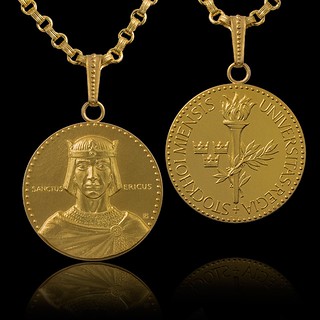 Stockholm University's large gold medal and gold medal of the 8th size are awarded to people who have, in different ways, helped to further the work of the university.
Stockholm University's large gold medal and gold medal of the 8th size are awarded to people who have, in different ways, helped to further the work of the university.
The President has decided to award the 2020 large gold medal to Kerstin Calissendorff, former Chair of the University Board.
After ten years as a Justice of the Supreme Court, which followed a long-standing legal career, Kerstin Calissendorff chose in 2013 to take on the side assignment as chairman of the board of Stockholm University. She herself is an alumna of the University, where she graduated with a Master of Laws in 1981, and also worked for a time as an assistant professor at the Department of Law. She thus returned to a not unfamiliar business, albeit with a new perspective. Kerstin Calissendorff has shouldered the task with deep commitment and striking lack of prestige, but also with great sharpness and unfailing compass for the interface between the board's assignment and the academic.
The medal was awarded at a reception in Spökslottet on 9 September 2021.
Stockholm University's gold medal of the 8th size
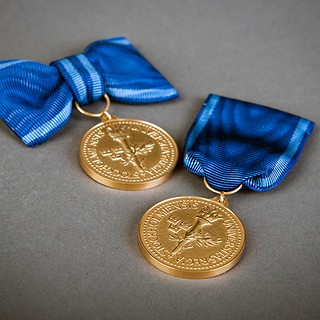 Stockholm University's gold medal of the 8th size, worn suspended by a ribbon, was instituted in 2010 and is granted to those who have contributed in a meaningful way to strengthening the university, its research or its teaching.
Stockholm University's gold medal of the 8th size, worn suspended by a ribbon, was instituted in 2010 and is granted to those who have contributed in a meaningful way to strengthening the university, its research or its teaching.
The President has decided to award the 2021 medal to Denny Vågerö and Cynthia de Wit.
Denny Vågerö became a trailblazer for research in health inequality, a field which was only rarely studied in Sweden in the 1990's. In the year 2000 he, Finn Diderichsen and Ulf Lundberg started the interdisciplinary research institute Centre for Health Equity Studies (CHESS) at Stockholm University in collaboration with Karolinska Institutet and with financial support from the two universities and from the Swedish Council for Social Research (SFR).
As Professor of Environmental Science, Cynthia de Wit has for many years held a long line of assignments of vital importance for Stockholm University's development into its present leading position within environmental science.
At an early, decisive stage when the activities at the Institute of Applied Environmental Science were transferred from the Swedish Environmental Protection Agency to Stockholm University, she had a leading role as its Director and Assistant director, in the transformation which laid the foundation for today's strong academic activities.
During more than 20 years, from its inception until 2020, Cynthia de Wit was a driving force as chair of Stockholm University's Environmental Council.
To read the complete article, see:
(https://www.su.se/english/about-the-university/prizes-and-academic-ceremonies/medals)
WORLD BANKNOTE OFFERS DISNEY DOLLARS
My wife and two of our children just returned Thursday from a long-awaited trip to Disney World, loaded down with souvenirs and great photos. In their latest sale, World Banknote Auctions is offering a great collection of Disney Dollars. See the earlier articles (linked below) for information on Ted Ryan's book on the series. -Editor
World Banknote Auctions has now launched Live Sale 28 at www.worldbanknoteauctions.com. The second session, on July 10, features an advanced collection of Disney Dollars, including some very high grade examples and scarcer types. While not technically world paper money, Disney Dollars are very collectable and remain legal tender in the Disney parks and stores. They are no longer being produced, giving collectors the opportunity to complete a collection, which is a surprisingly challenging task achieved by few. Disney Dollars have become more and more popular in recent years, no surprise given the continued popularity of the characters, many of whom appear on the notes.
Live Sale 28 starts on July 7, 2022, with live bidding that day at 1 PM Eastern / 10 AM Pacific. Please note that Sale 28 is divided in two parts, each selling on a different day. The first live sale with 533 lots takes place on July 7 at 10 AM PST. The second timed sale with 412 lots opens on June 19 at 10 AM PST and closes on July 10 at 3 PM PST (special bidding rules apply for the timed sale, please see our website for details).
To read earlier E-Sylum articles, see:
NEW BOOK: DISNEY NUMISMAGIC
(https://www.coinbooks.org/v23/esylum_v23n36a06.html)
BOOK REVIEW: DISNEY NUMISMAGIC
(https://www.coinbooks.org/v23/esylum_v23n39a09.html)
WORLD BANKNOTE AUCTIONS SALE 28
(https://www.coinbooks.org/v25/esylum_v25n26a20.html)
SIERRA LEONE SLASHES 'ZEROS OF SHAME'
Students of hyperinflation know it's a regular occurence for governments to revalue their currency and legislate away the many embarrassing zeros at the end of their banknote denominations. This article describes how Sierra Leone slashed the "zeros of shame" from their notes. -Editor
Sierra Leone on Friday introduced a new family of banknotes, stripping three zeros off the leone, in a bid to restore confidence in the inflation-hit national currency.
The Bank of Sierra Leone announced the move last August, insisting the public's purchasing power would not be affected by the change.
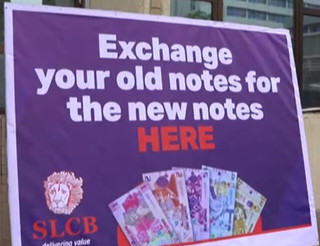 A note of 10 new leones is the equivalent of a note of 10,000 old leones, which changes hands for around 75 US cents.
A note of 10 new leones is the equivalent of a note of 10,000 old leones, which changes hands for around 75 US cents.
Year-on-year inflation in the West African state was 24.87 percent in May, according to the national statistics agency.
Rising prices had driven the printing of banknotes, resulting in a mountain of paper money that is costly to sustain and unwieldy for the public.
Shoppers need huge quantities of banknotes for the simplest transactions, and unscrupulous bank tellers sometimes pilfer notes from sealed bundles of bills.
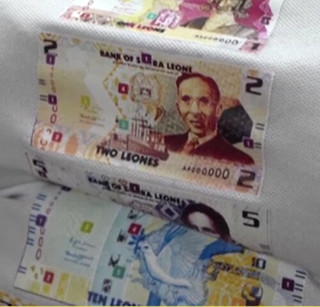 "We are removing the 'zeros of shame' to get the currency properly aligned," Morlai Bangura, a central bank director, told AFP earlier in the week.
"We are removing the 'zeros of shame' to get the currency properly aligned," Morlai Bangura, a central bank director, told AFP earlier in the week.
On Friday, customers braving the rain queued at commercial banks to swap their old banknotes for new ones.
"The changing of our currency is necessary -- we were used to carrying bags to the bank to withdraw our money, but not anymore," Alice Frazer, 70, said after exchanging her notes at the Sierra Leone Commercial Bank, a state-owned bank in central Freetown.
The new banknotes have a similar design to the old ones but are smaller in size.
Sierra Leone's eight million people live in one of the poorest nations in the world, ranking 182 out of 189 countries in the UN's Human Development Index.
To read the complete article, see:
Sierra Leone slashes 'zeros of shame' from banknotes
(https://www.africanews.com/2022/07/02/sierra-leone-slashes-zeros-of-shame-from-banknotes/)
RUSSIA SANCTIONS DELAY 100 ROUBLE BANKNOTE
Western sanctions against Russa are delaying the rollout of a new 100 rouble banknote. -Editor
Russia's new 100 rouble banknotes are impossible to withdraw from ATMs because the Western companies that programmed them have left the country.
The Rzhev Memorial to the Soviet Soldier, a memorial to one of the bloodiest battles of the Second World War due to the high Soviet casualties, features on the new banknote.
One the other side of the 100-rouble banknote – worth approximately £1.50 – is a picture of the Kremlin, which regularly draws comparisons between World War Two and its war in Ukraine to fuel patriotism in the country.
But the Association of Russian Banks has asked for a six-month delay to the introduction of the banknote as it said a new security feature was needed, according to The Telegraph.
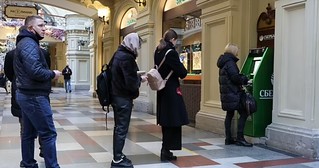 Western ATM manufacturer Diebold Nixdorf and software company NCR Corporation, companies responsible for installing the bank machines and updating their software, are both American multinationals that have pulled out of Russia following Vladimir Putin's invasion of Ukraine on February 24.
Western ATM manufacturer Diebold Nixdorf and software company NCR Corporation, companies responsible for installing the bank machines and updating their software, are both American multinationals that have pulled out of Russia following Vladimir Putin's invasion of Ukraine on February 24.
The Russian banks are having trouble adding the security feature without the cooperation of Western companies, stalling the rollout of the new patriotic banknote.
The 100-rouble banknote was set to join the last edition printed in 2015 which was printed a year after the Russian annexation of Crimea to celebrate the seizing of Ukrainian territory.
Officials in Moscow have sought to downplay the gravity of the Western sanctions, promising that Russia will adapt and take steps to stop the flight of foreign currency and capital.
To read the complete articles, see:
Russia's new 100 rouble banknote is impossible to withdraw from ATMs after Western firms that program cash machine quit the country following Ukraine invasion
(https://www.dailymail.co.uk/news/article-10975495/Russias-new-100-rouble-banknote-impossible-withdraw-ATMs-Western-firms-pulled-out.html)
Cash machine says no: How Russia's new 100 rouble banknotes have been rendered useless
(https://www.telegraph.co.uk/world-news/2022/07/01/russian-cash-machines-cant-dispense-100-rouble-banknotes-western/)
DON'T FOLD THOSE NEW POLYMER NOTES
... and don't iron, staple them or place them near an open flame. Guidelines released by the Central Bank of the Philippines for handling their new polymer banknote have citizens in an uproar. -Editor
Bangko Sentral ng Pilipinas (BSP; Central Bank of the Philippines) released guidelines on handling the new PHP1000 polymer banknotes, which include keeping them flat and not folding them in half — as one inevitably would when storing them in a folding wallet.
BSP Governor Felipe Medalla realizes this and has asked the public to carry a longer-sized wallet instead, adding that women would not have a hard time because they carry handbags, a remark that clearly did not sit well with people online.
In an interview with One News, Medalla said, One thing to adjust is to have wallets or purses that prevent it from being totally folded. The wallet must be as long as the bill so that the money wouldn't need to be folded.
It's easier for women because you have handbags,
he added in Filipino.
The new guidelines from the BSP have raised concerns among netizens, who argued that handling the new polymer banknotes required more care than the traditional paper bills.
Does he really think most laborers use wallets?
One user asked.
Tell that to the market vendors, jeepney and tricycle drivers, and bus conductors,
another said.
Last year, the BSP revealed their plans to test polymer on P1,000 bills on a limited basis in early 2022.
Are polymer notes really that sensitive to folding? I don't recall hearing that advice before, and polymer notes have been around for a while. Are these instructions over the top?
Found via News & Notes from the Society of Paper Money Collectors (Volume VIII, Number 2, June 28, 2022) -Editor
To read the complete article, see:
‘Sexist' & ‘Unnecessary': Netizens slam new PHP1000 polymer banknotes after being told they shouldn't fold them in half
(https://ph.news.yahoo.com/sexist-unnecessary-netizens-slam-php1000-113142914.html)
LOOSE CHANGE: JULY 3, 2022
Here are some additional items in the media this week that may be of interest. -Editor
Coin World reported on honors received by two outgoing board members of the Citizen's Coinage Advisory Committee. -Editor
Two-term members of the Citizens Coinage Advisory Committee — Pennsylvania collector Thomas J. Uram and Pennsylvania medallic sculptor Jeanne Stevens-Sollman — were recognized for their service June 14 by Ventris C. Gibson, the day before the U.S. Senate confirmed Gibson to a five-year-term as the 40th director of the United States Mint.
Both Uram and Stevens-Sollman were CCAC appointees serving the interests of the general public.
To read the complete article, see:
Mint director Gibson honors two CCAC ex-members
(https://www.coinworld.com/news/us-coins/mint-director-gibson-honors-two-ccac-ex-members)
A working paper published by the Hoover Institution at Stanford examines Chinese Paper Money in the Late Qing dynasty and the Early Republic. Found via News & Notes from the Society of Paper Money Collectors (Volume VIII, Number 2, June 28, 2022). -Editor
This chapter traces the history of privately issued paper notes that
circulated as currency in Qing-era China. Private paper notes first appeared in China as early as the Tang dynasty (618-907 AD), but their prevalence expanded by orders of magnitude from the late eighteenth to early nineteenth centuries. By no later than the Daoguang imperial reign (1820-1850), private paper circulated through all strata of society. Wealthy tea merchants and humble farmers alike tendered and accepted paper notes as a form of payment. Issuers of paper money set up shop in commercial hubs and rural market towns. For this reason, Qing-era private notes qualify as a form of paper money, much like western banknotes, and not merely as an instrument of wholesale commerce. The nature of these monetary instruments varied. Most were redeemable for metal: under the Qing's bimetallic standard, this meant either unminted silver measured in taels
(roughly 1.3 ounce) or minted copper coins known as cash.
To read the complete paper, see:
Paper Money in the Late Qing and Early Republic, 1820-1935
(https://www.hoover.org/sites/default/files/research/docs/2022-06-22_hoover_history_working_group_-_lowenstein.pdf)
In a Greysheet column Patrick Ian Perez discusses the current state of the U.S. coin market. -Editor
One can speculate the significant prices realized that have been achieved over the past two years are drawing many collections, large and small, into the market. This additional supply could meet up with now less demand, which has the potential to dampen prices. A similar phenomenon could play out in your local large retail store. A year ago, inflation was set alight because of snarled supply chains and strong demand, sending prices higher for consumer goods. Now, the supply chains are wide open, and the previously needed (and over-ordered) inventory is arriving to less demand, which was stunted by the higher prices and may result in discounting to move the excess.
Observing the Stack's Bowers June Baltimore sale and the Heritage Long Beach/Summer FUN combo sale will give a good indication as to the state of the market as we head into the ANA World's Fair of Money this August.
To read the complete article, see:
The Business of Numismatics: July 2022 Greysheet
(https://www.greysheet.com/news/story/the-business-of-numismatics-july-2022-greysheet)
In the department-of-other-collectibles-department is this Vanity Fair horror story of the collector/dealer who lost an ultimate lifetime collection of classic video games in a burglary. -Editor
 Other collectors had rare games, sure, but in the back room of his store, and especially in the safe, he was proud to own 10,000 of what he described as
Other collectors had rare games, sure, but in the back room of his store, and especially in the safe, he was proud to own 10,000 of what he described as cherry
copies—his preferred term for virgin condition. The cardboard on his Super Nintendo games was still crispy, as collectors like to say. His Sega Genesis and Master System games were as pristine in their clamshells as if they had been hanging from the racks at KB Toys.
Nothing about the store's appearance alluded to the miracle of his collection. It was just a single-story former laundromat with a workaday sign. He'd had the idea to paint Mario and Luigi so big, anyone could see them from the main road beyond the parking lot in an antiquated strip mall, the Dye Hard Salon on one side and Murphy's GOOD EATS Diner on the other. Trade-N-Games, this pixelated utopia in a suburb of St. Louis, had turned out exactly how he'd imagined it more than 20 years ago.
He'd kept this museum of his own making behind a metal vault door taped over with a Samus Aran poster from Metroid (intergalactic bounty hunter versus pirates, 1986–2021). The contents of the vault and the safe within it had made him famous to certain collectors, who would geek out about him and want to see those YouTube video tours of everything he had—games like Air Raid (save the city from aliens, 1982) and Little Samson (impish warrior versus world, 1992) and The Amazing Spider-Man: Web of Fire (guy you know versus terrorists, 1996) on the 32X, pieces of what he considered history that collectors might describe as grails.
To read the complete article, see:
Jason Brassard Spent His Lifetime Collecting the Rarest Video Games. Until the Heist.
(https://www.vanityfair.com/style/2022/06/rare-nintendo-atari-games-stolen)
AUSTRALIAN COIN NOODLING
In another sign of the vitality of the numismatic hobby, avid coin searchers ("new-age treasure hunters") are causing a fuss in Australia. -Editor
Teenagers with time to sort through hundreds of gold coins are making a fortune with 'coin noodling', but not everyone is impressed by the money-making craze.
Loved by Generation Z, the craze involves depositing notes in a coin change machine, digging through the rolls of coins for rare ones and then giving the rejects back to the bank.
Described by viral social media channel Gold Coast Picker as a 'risk-free investment opportunity', the coin noodling craze has become huge with people willing to put in the effort.
'We go treasure hunting for rare and commemorative coins to collect and make money,' the people behind the popular page revealed.
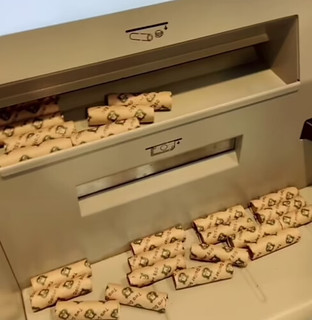 In the video, which was posted across TikTok, Facebook and YouTube, the young star of the channel is seen feeding $1,100 worth of notes into the machine.
In the video, which was posted across TikTok, Facebook and YouTube, the young star of the channel is seen feeding $1,100 worth of notes into the machine.
He then collects the rolls, cracks them open, and sorts through them looking for any worth more than $2.
But people who work in the industry have slammed the industrious effort, calling the young man shameful and a time-waster.
'All you are doing is wasting your own time and stuffing people around,' one woman said alongside a rude emoji.
Others complained they have gone to use the coin machines for their business only to find it empty.
Some said the practice should be banned completely.
'This is not what those machines are intended for and if you keep doing it they'll shut them down or make them for business only,'
One person said the young man in the video needs to 'find a job' suggesting he roll coins in a bank.
But others defended the treasure hunter, and the generation of young 'coin noodlers' who admitted to trying it out after seeing similar videos.
'As long as they do it at the change machine and not at the bank counter then they are not wasting anyone's time,' one woman said.
Some thought the video was 'genius'.
So maybe these people don't start off as coin collectors, just treasure hunters. But having been introduced to the hobby, hopefully many will learn something about numismatics and take their interest to the next level.
I've never seen a coin-roll-dispensing ATM here in the U.S. What other countries have these? -Editor
To read the complete article, see:
Banks are furious over new ATM trend young Aussies are using to make 'thousands' of dollars with little effort and zero risk : 'We are the new-age treasure hunters'
(https://www.dailymail.co.uk/femail/lifehacks/article-10959203/Banks-furious-new-coin-noodling-ATM-trend-young-Aussies-using.html)

